Entertainment
What Russia was like in 1934
Published
1 year agoon
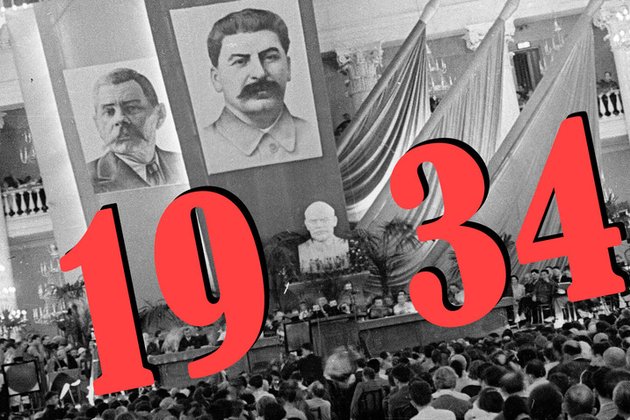
[ad_1]
These archival photos capture the rapid development of the Soviet Union, a country that no longer exists.
Stalin would approve the general plan for the reconstruction of Moscow in a year, but the changes in the capital had already begun. They started to widen roads and ruthlessly demolish all old, “disturbing” buildings.
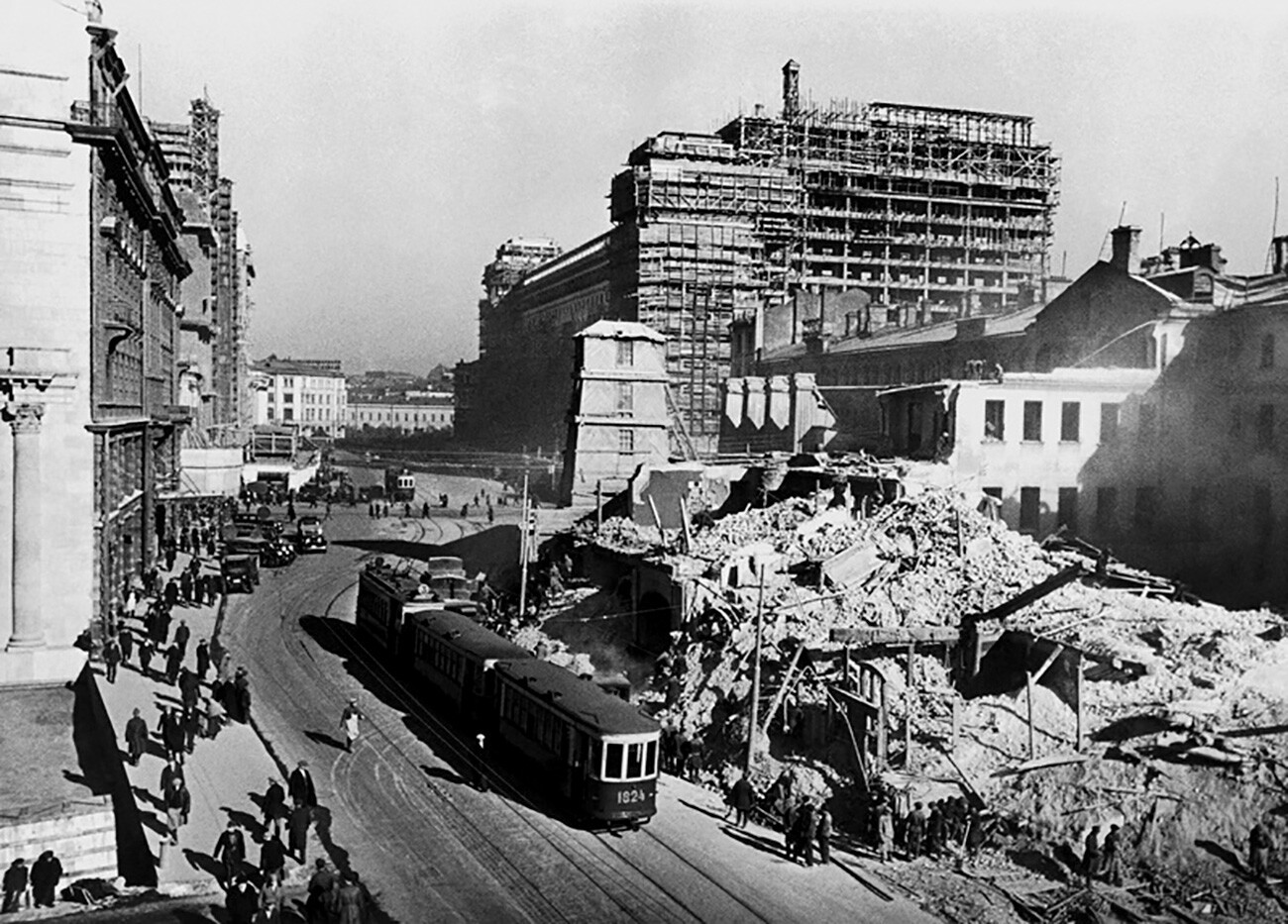
Mark Markov-Grinberg/Union of Photographers of Russia/russiainphoto.ru
In particular, almost the entire Kitaigorodskaya Wall was demolished. This fortification was built around the center of Moscow back in the 16th century.
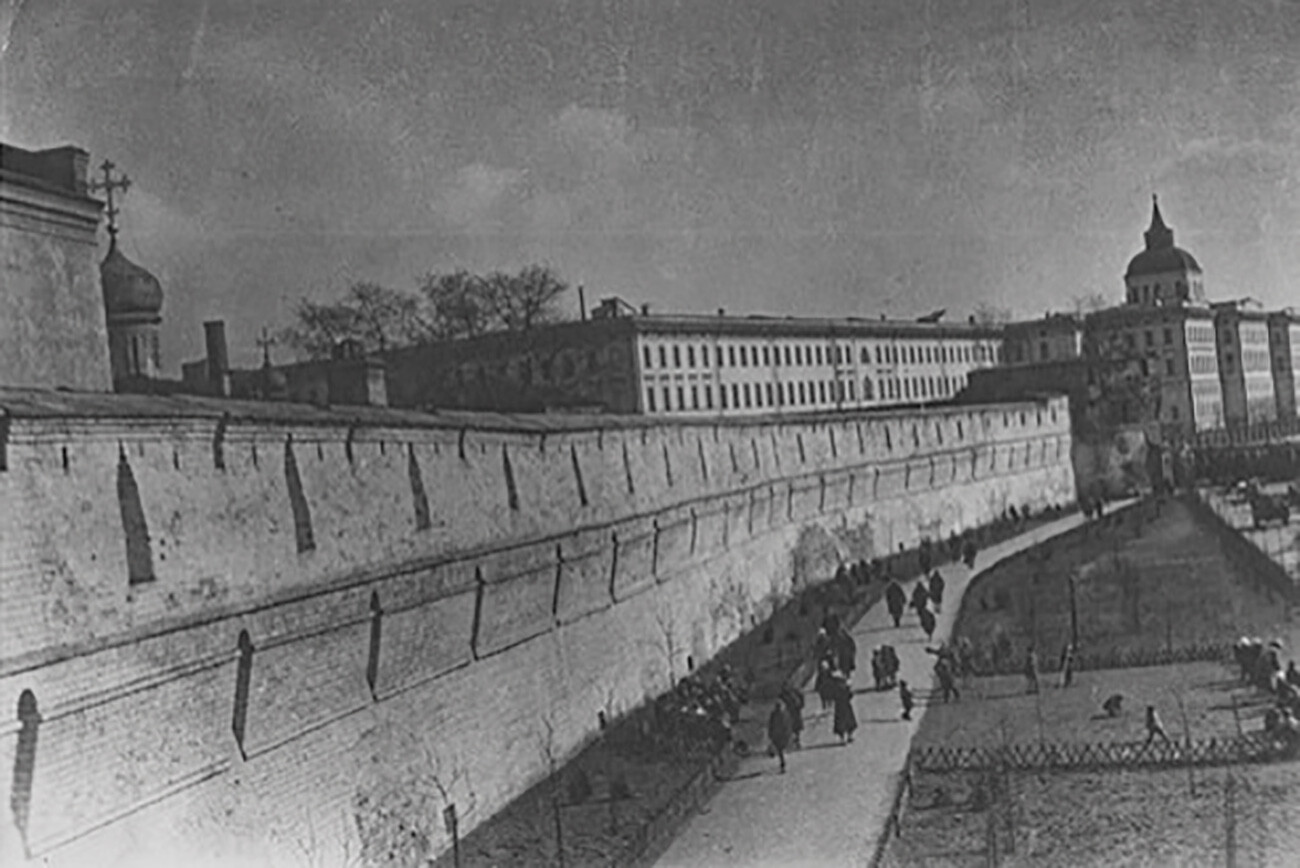
Intourist photo studio/russiainphoto.ru
The photo below shows Moscow streets being paved after the demolition of the wall.
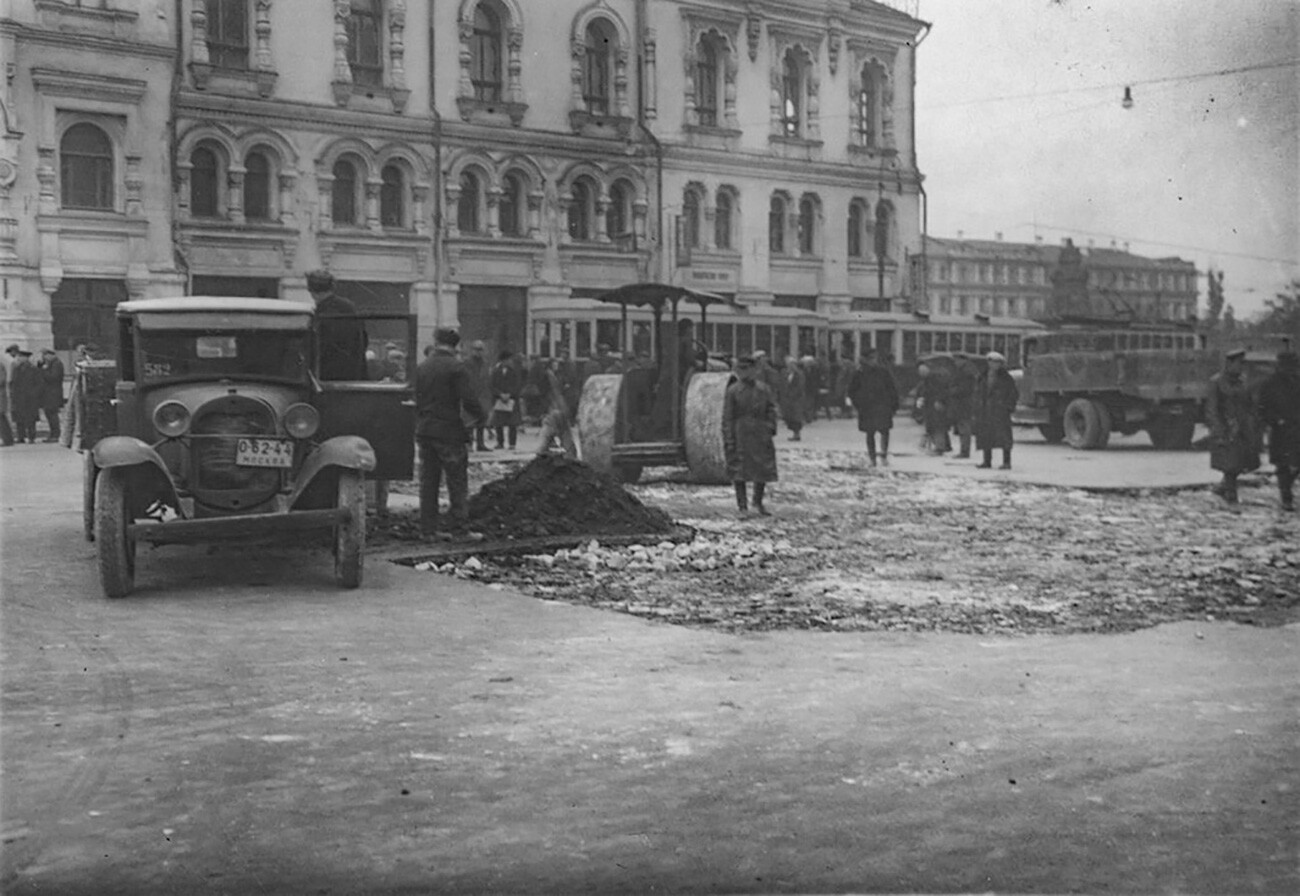
Museum of Moscow/russiainphoto.ru
Trolleybus transport was launched in Moscow a year earlier.
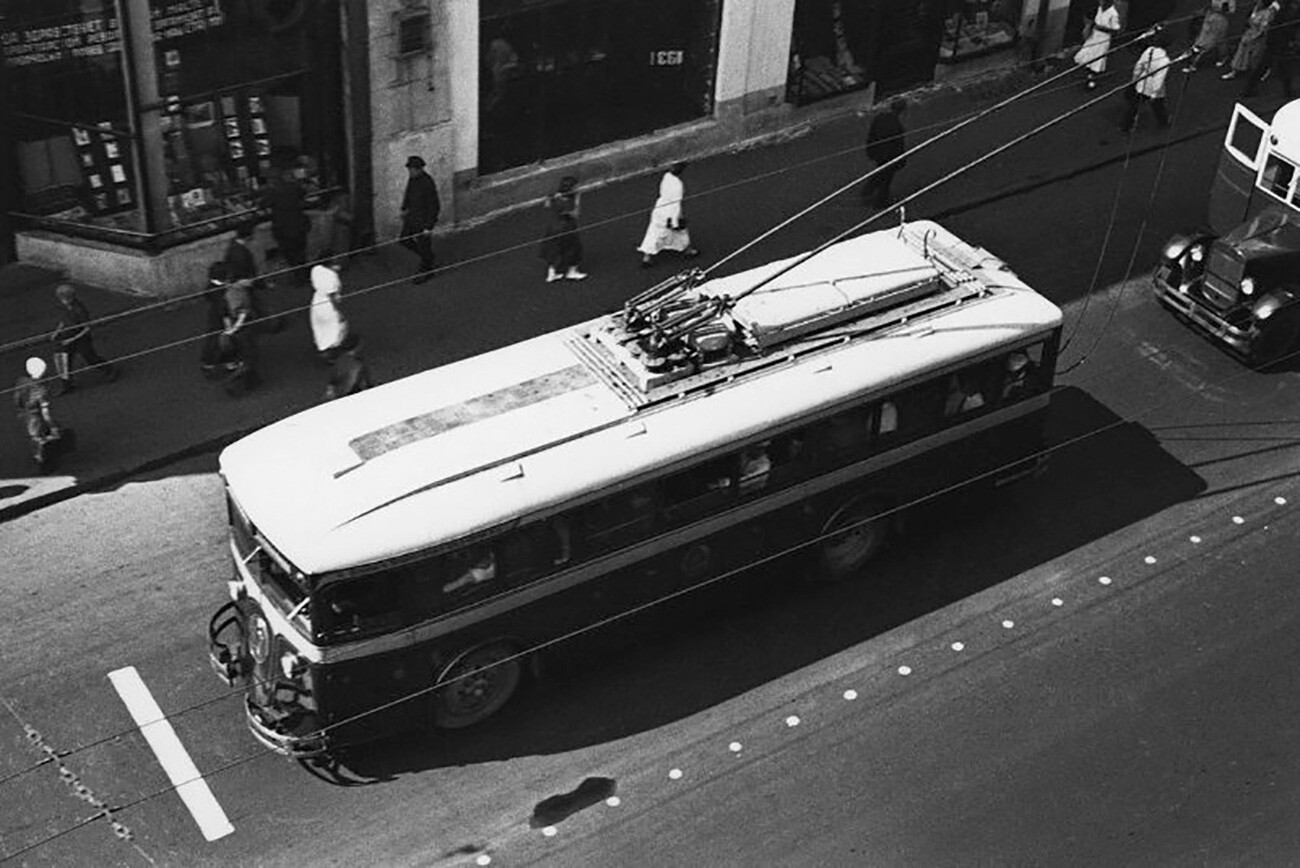
Mikhail Prekhner/MAMM/MDF/russiainphoto.ru
And yet, at that time, the capital wasn’t yet a large metropolis. The places that are now considered almost the center were suburbs back then. Below, for example, is a picturesque green area – Luzhniki.
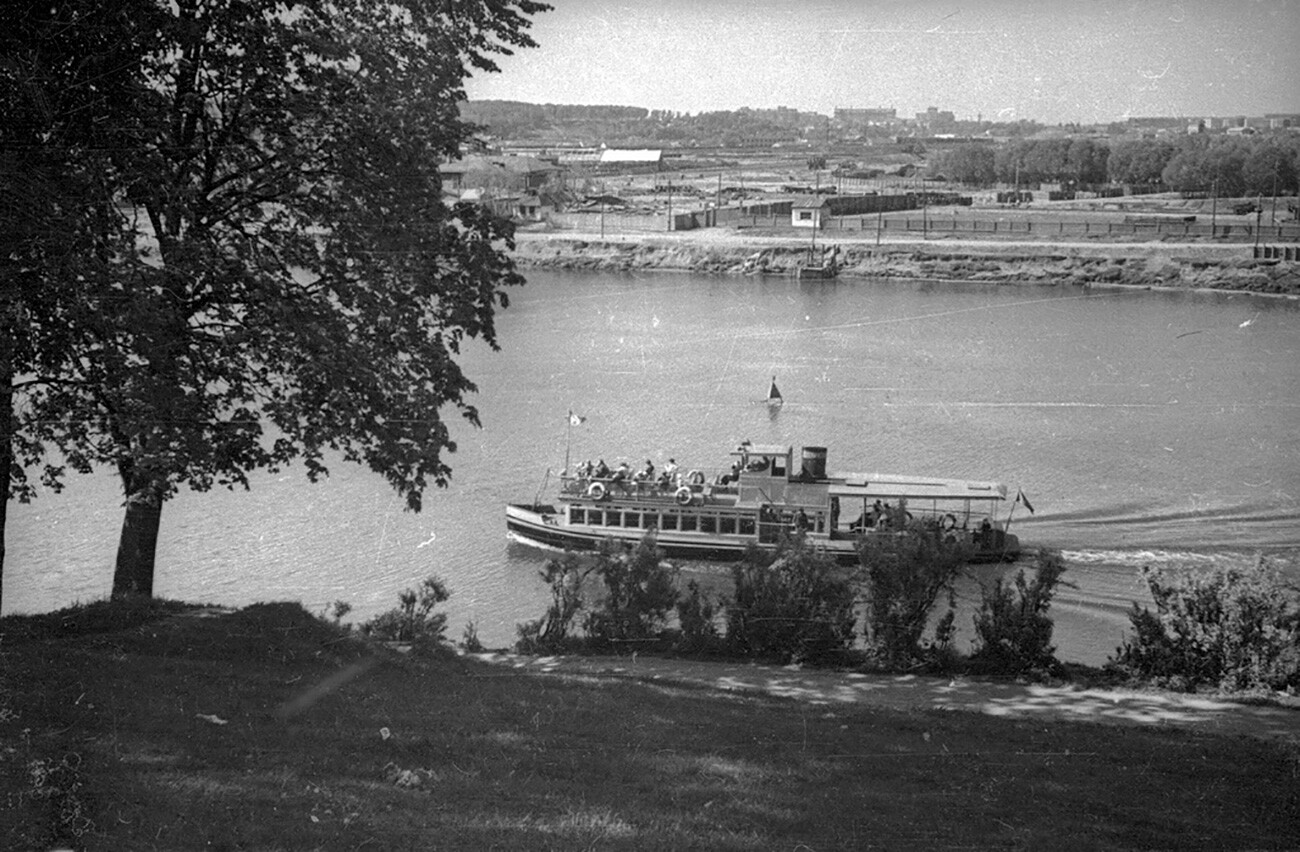
Alexander Ustinov/Ninel Ustinova archive/russiainphoto.ru
Moscow Metro would only open the following year, but, in 1934, a epoch-making event took place: the trial run of the first metro train.
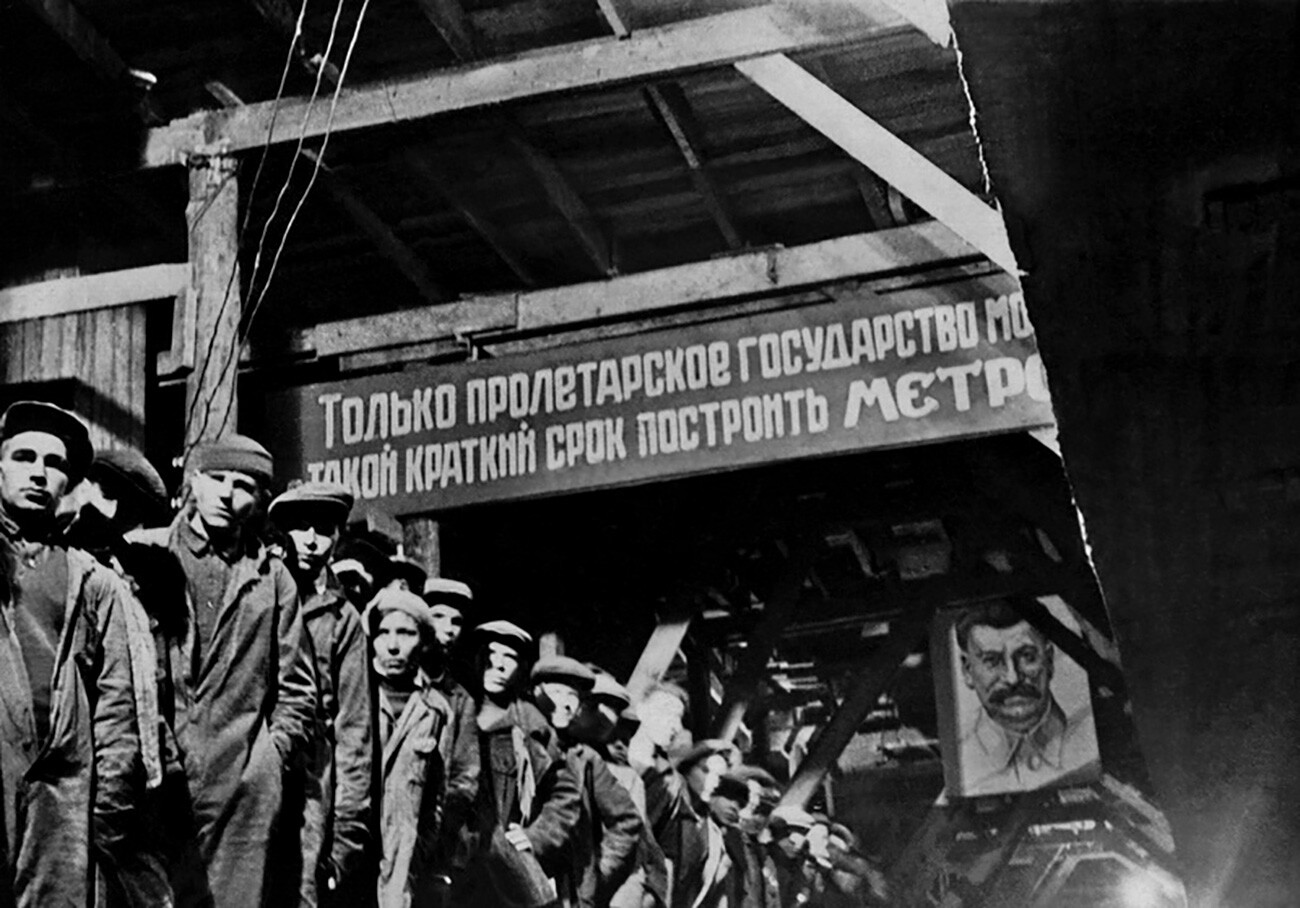
State Museum of Political History of Russia/russiainphoto.ru
Lazar Kaganovich (pictured in the center) was Stalin’s fellow responsible for the construction of the subway. At first, until 1955, the capital’s metro even bore his name.
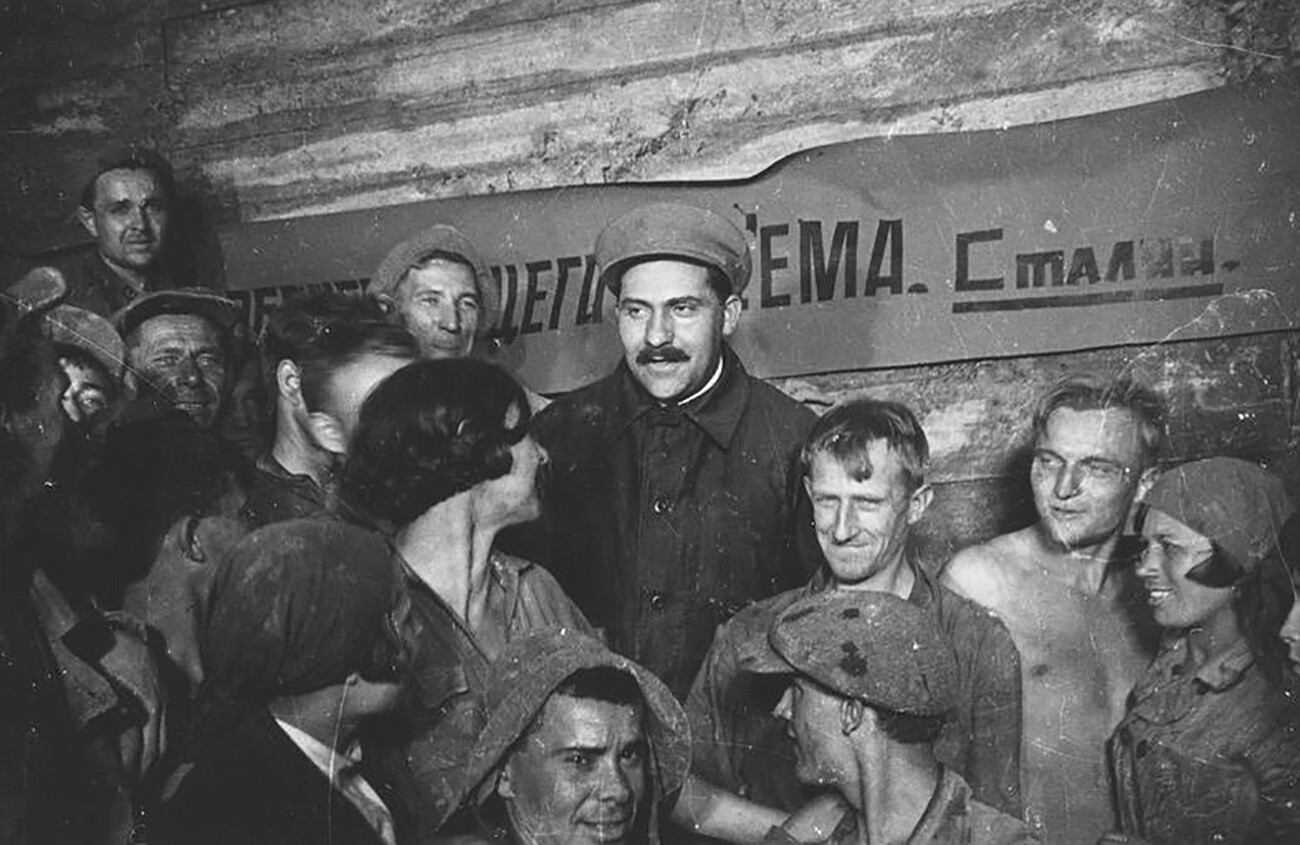
Anatoly Yegorov/MAMM/MDF/russiainphoto.ru
The first half of the 1930s marked the beginning of powerful industrialization in the USSR. The course on romanticization of labor and high achievements was taken. Though the Stakhanovite movement of strikers of labor would only appear the following year. The photo below shows a miner posing outside a factory.
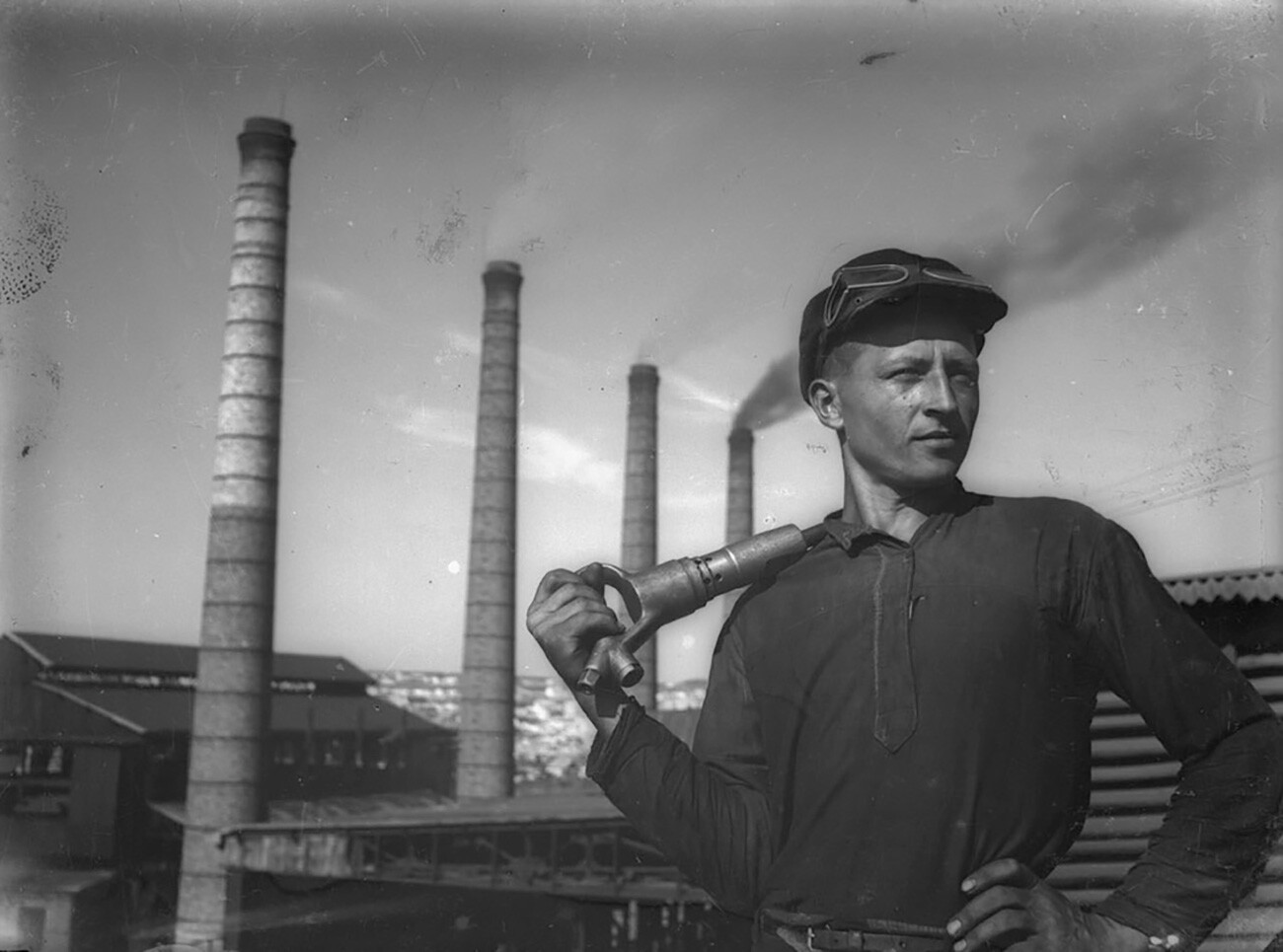
Yevgeny Khaldei/MAMM/MDF/russiainphoto.ru
The electrification of the country was also actively progressing, so power lines and masts became new landscape details inspiring photographers.
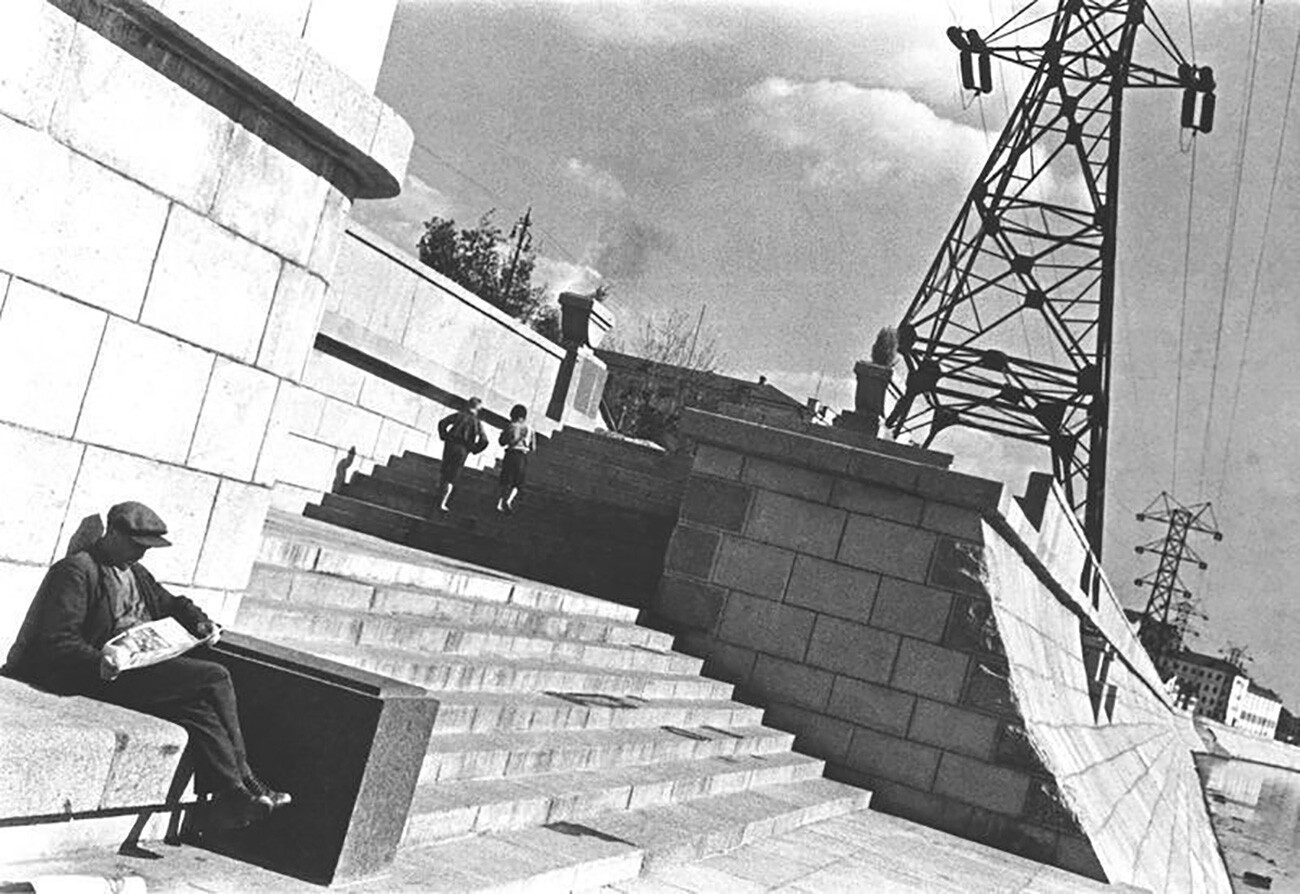
Boris Ignatovich/MAMM/MDF/russiainphoto.ru
Now known as the ‘Moskvich’ plant, in the 1930s, it was called the ‘KIM’ (Communist International Youth) Moscow Automobile Assembly Plant and assembled GAZ cars with Soviet components.
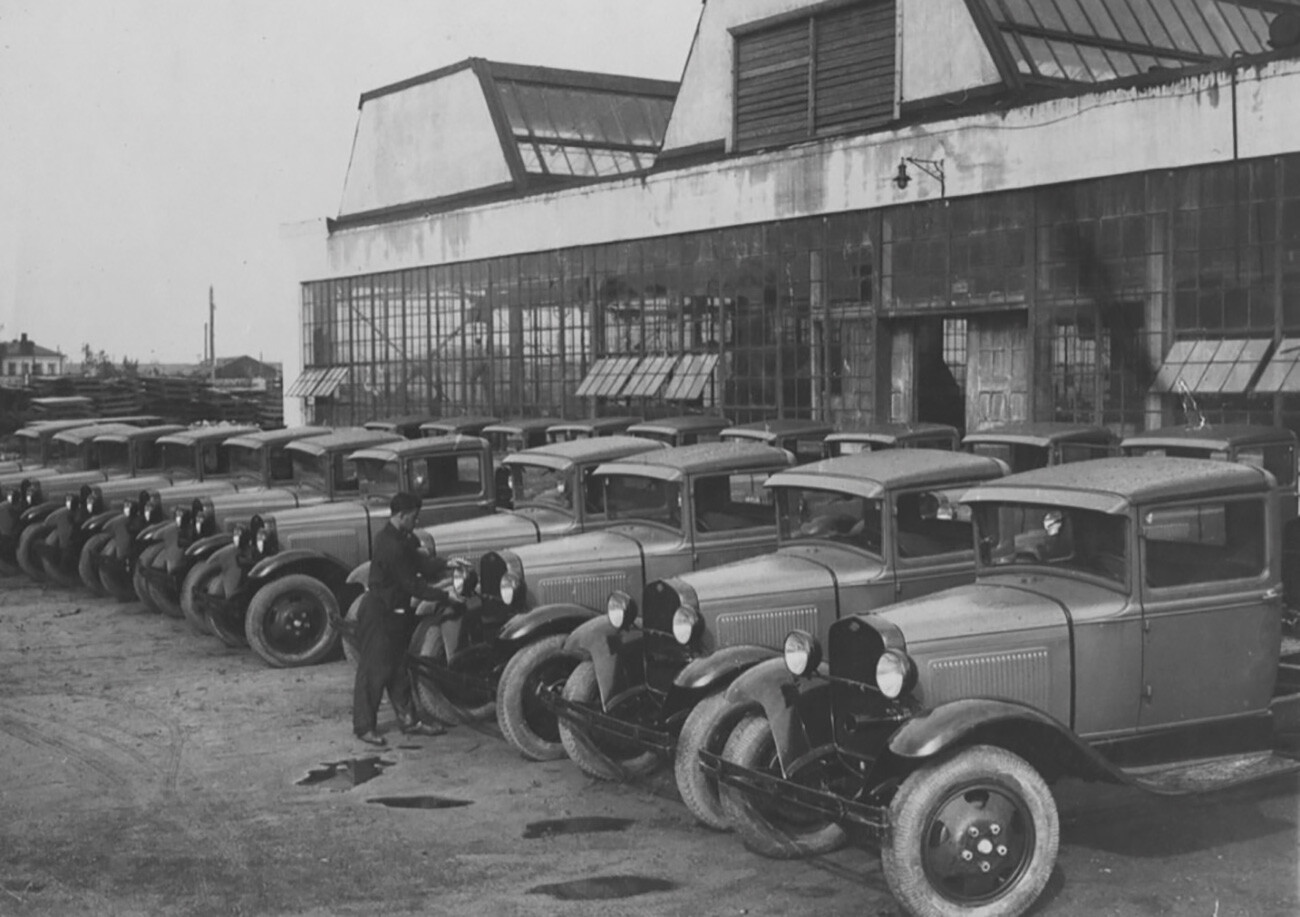
Moscow Museum/russiainphoto.ru
The Labor Day on May 1 was celebrated with pomp on the Red Square in Moscow.
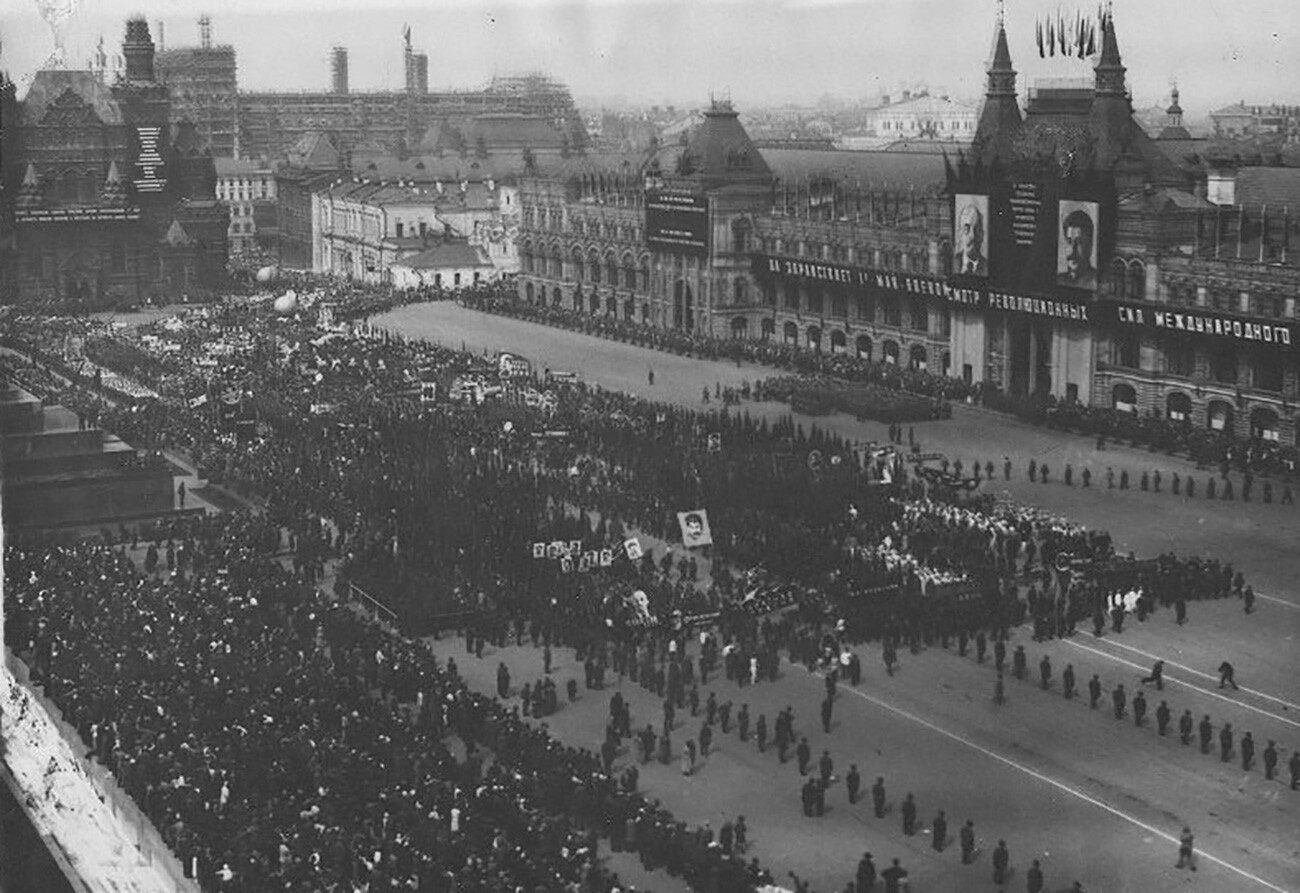
A.Matveyev/MAMM/MDF/russiainphoto.ru
The 17th Congress of the All-Union Communist Party (Bolsheviks) in early 1934 was officially called the ‘Congress of Winners’ and proclaimed the successful results of the first five-year industrialization. Later, more than half of the delegates would be arrested or executed. The photo shows the presidium of the congress.
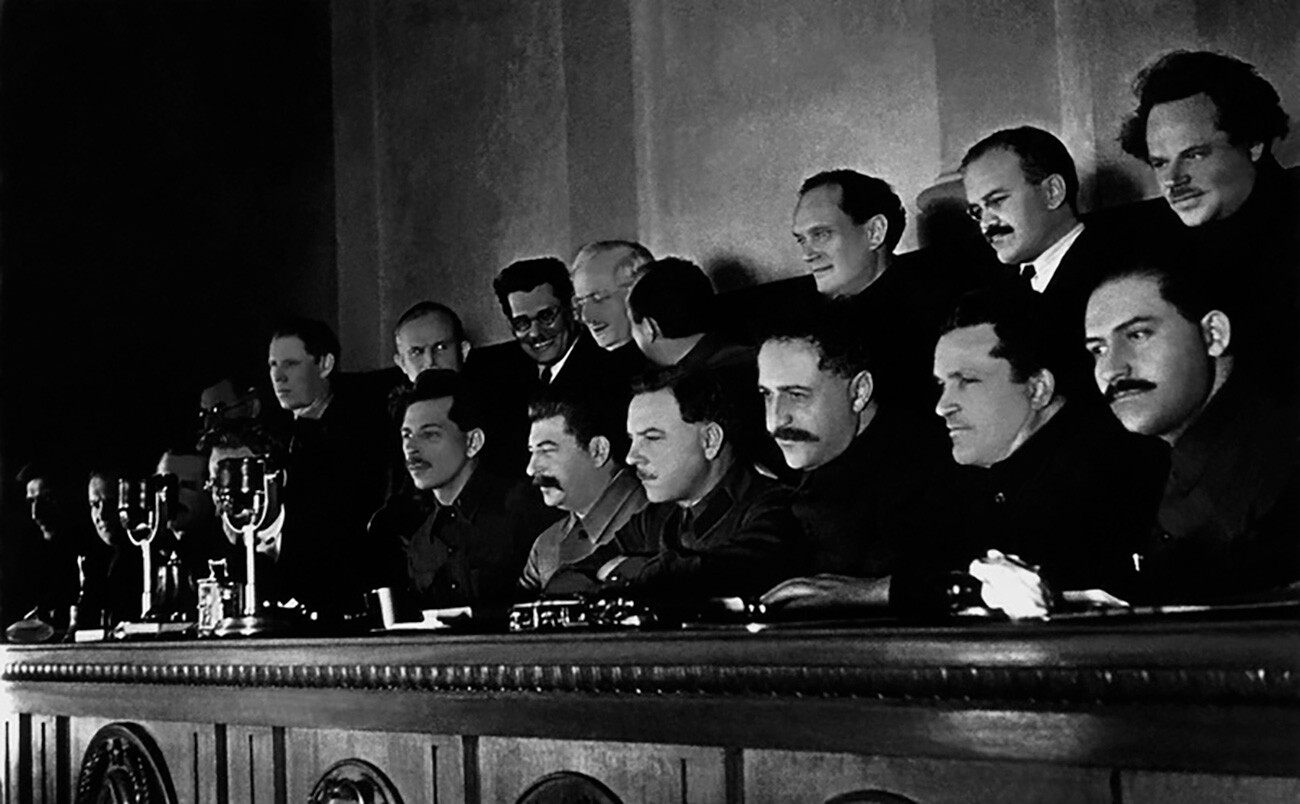
Russian Federation State Archive/russiainphoto.ru
By the year 1934, the Gulag was already in operation; by the previous year, the White Sea-Baltic Canal had been built by prisoners in record time and other extensive construction projects were underway. But, there were no mass repressions yet. The photo below shows prisoners at a penal labor colony near Chelyabinsk.
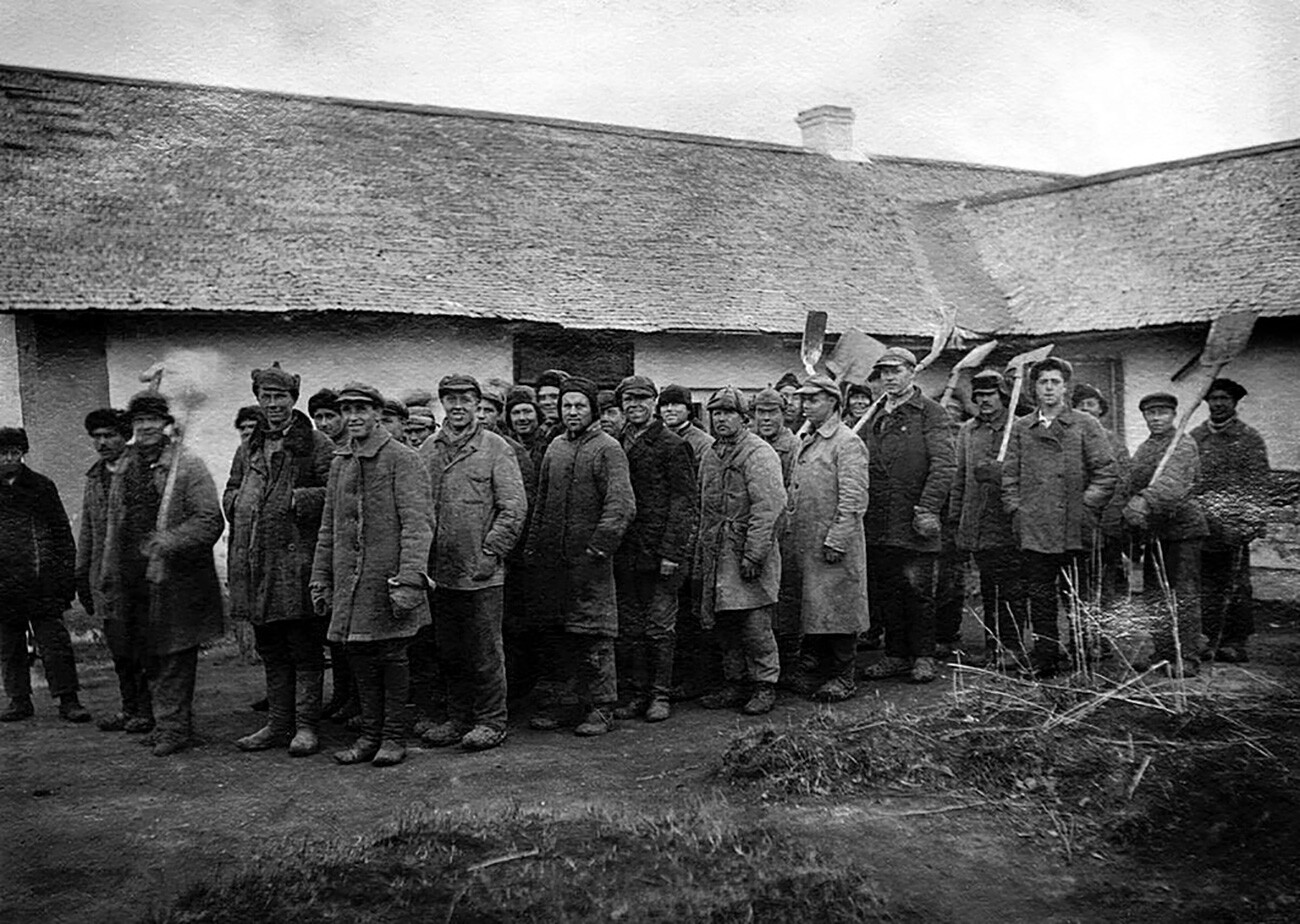
South Ural State Historical Museum/russiainphoto.ru
On December 1, 1934, Sergei Kirov, head of the city’s party branch and an associate of Stalin, was assassinated in Leningrad. It is believed that his murder was the reason for the start of Stalin’s so-called ‘Great Purge’ or, simply, mass repression in the USSR. In the photo below – Joseph Stalin and Andrei Zhdanov at Kirov’s funeral.
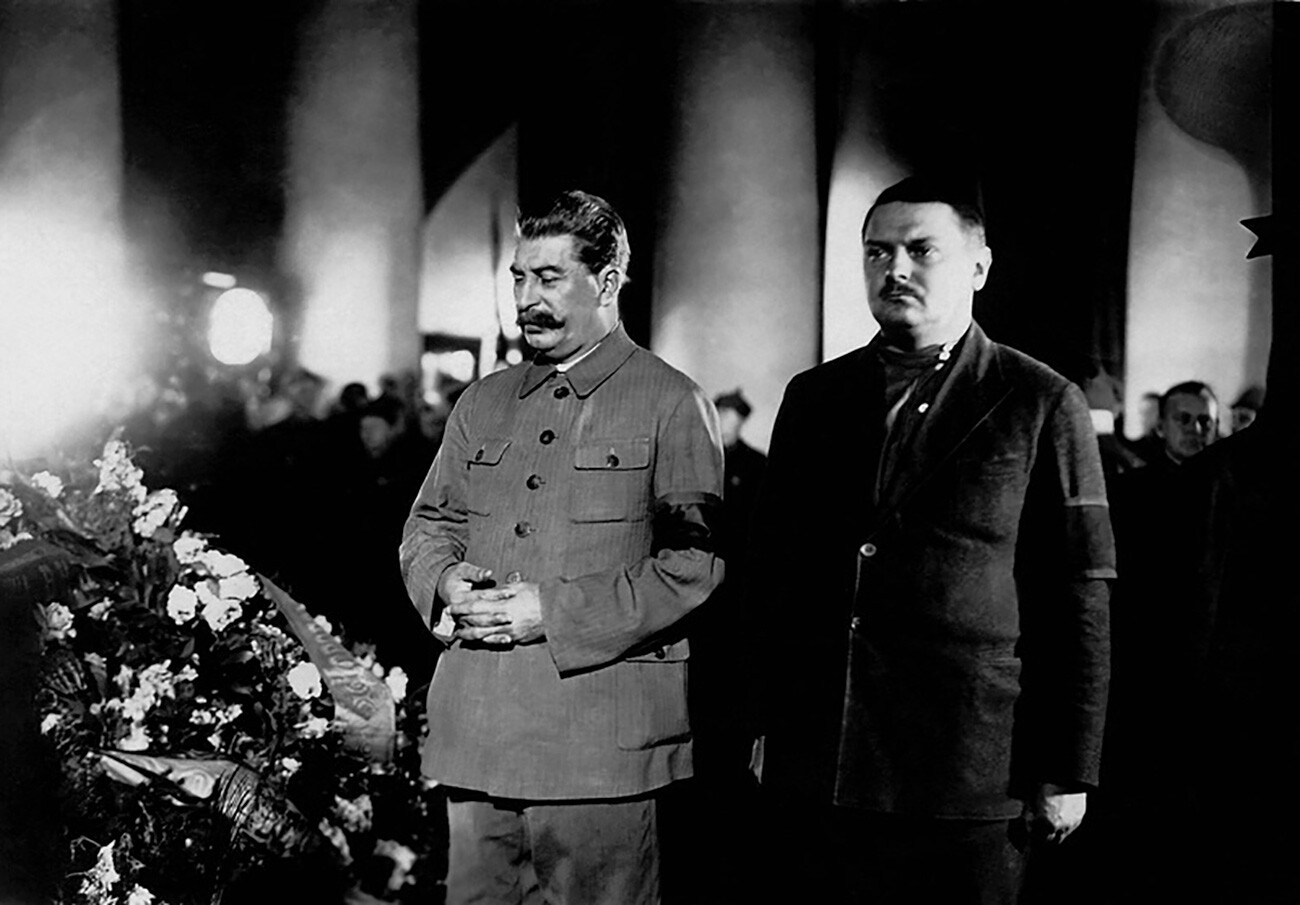
State Museum of Political History of Russia/russiainphoto.ru
Another important event in 1934 was the First All-Union Congress of Soviet Writers. Its honorary chairman was Maxim Gorky, the country’s main proletarian writer and a real star and cult figure. Already during his lifetime, streets, parks were named in his honor – even an entire city, his native Nizhny Novgorod, was renamed Gorky.
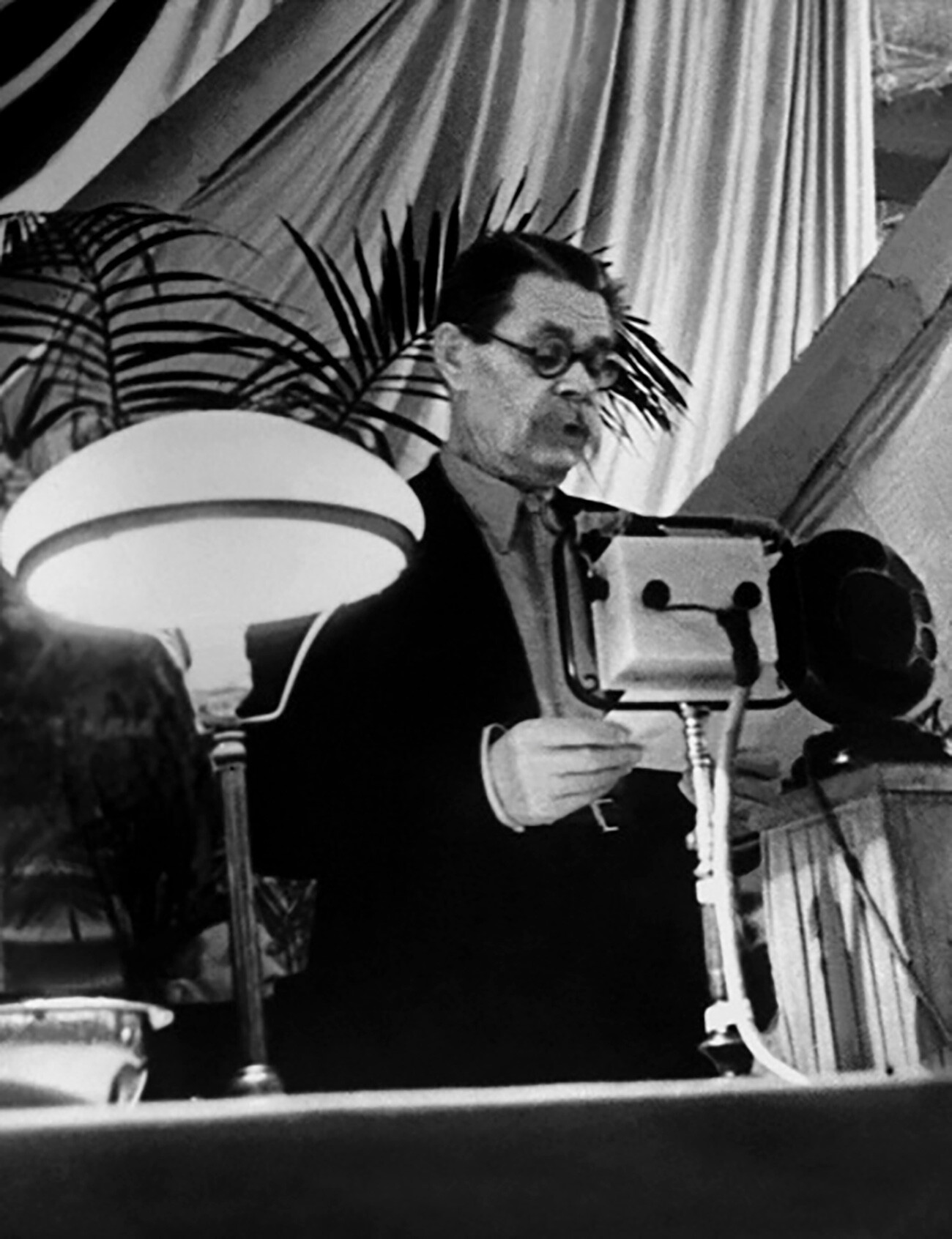
Ivan Shagin/MAMM/MDF/russiainphoto.ru
Another star of the literary world in 1934 was writer Mikhail Sholokhov. By that time, three volumes of his cult novel about the Civil War, ‘The Quiet Don’, had already been published. And the country was eagerly awaiting the finale (it would be released in 1940). It is said that the book was read and personally approved by Stalin, despite the fact that the protagonist never fully joined the Bolsheviks.
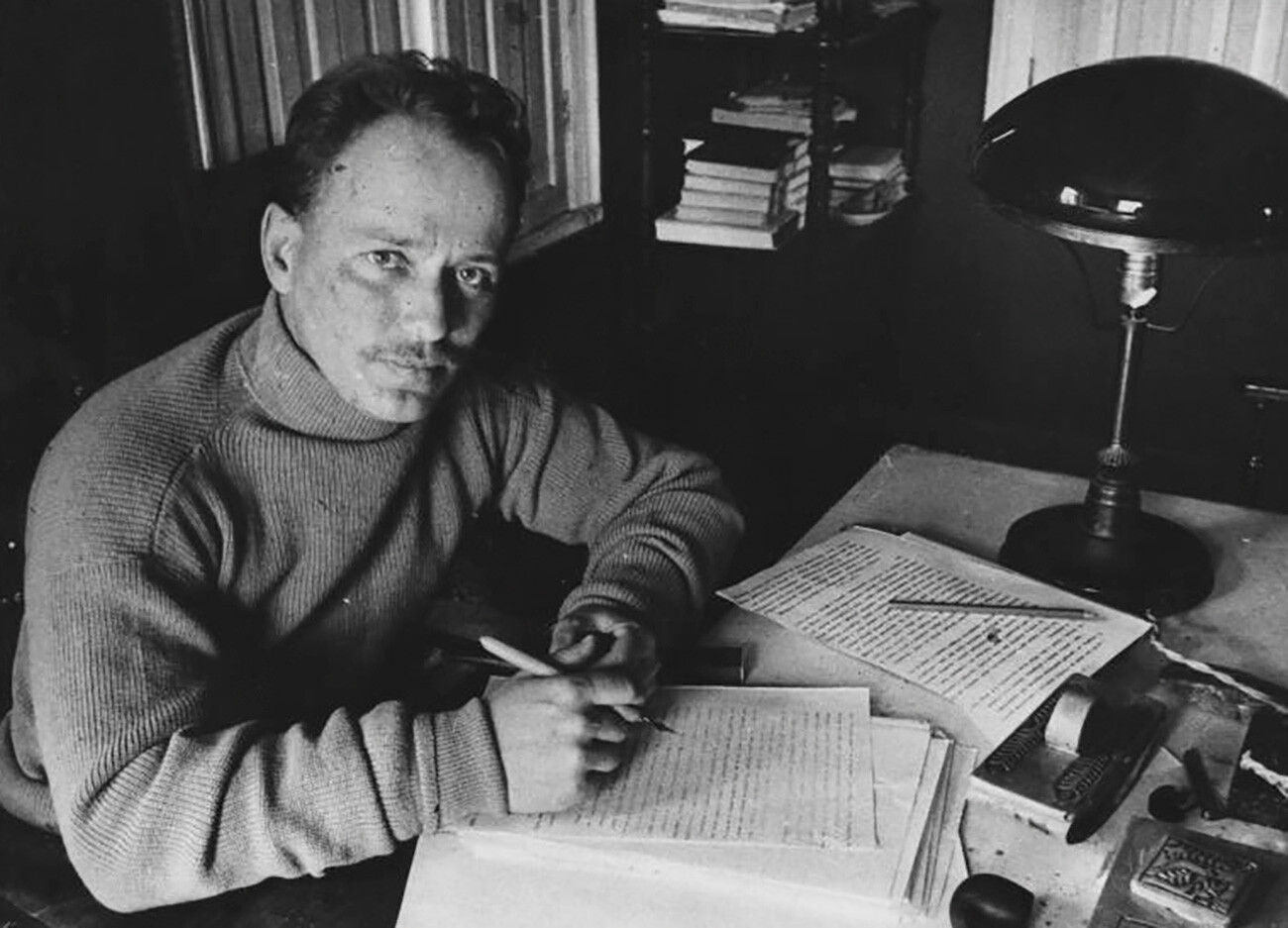
Viktor Temin/MAMM/MDF/russiainphoto.ru
In 1934, the British writer H. G. Wells visited the USSR for the third time and was a guest of honor.
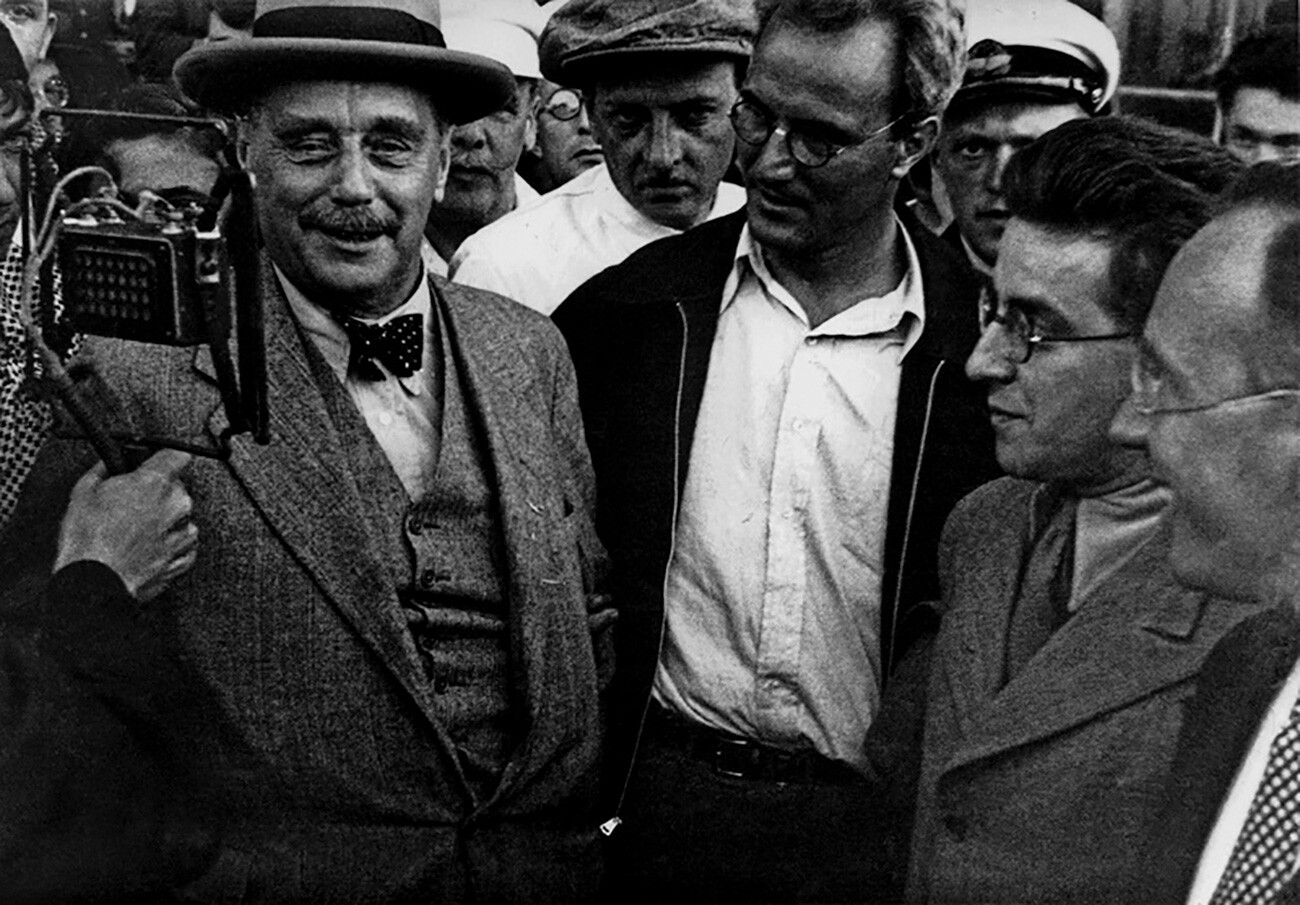
State Archive of Film and Photo Documents/russiainphoto.ru
Many foreigners sympathizing with socialism and Stalin personally came to Soviet Moscow. In the photo below, actors of the Mosfilm studio (star Lyubov Orlova pictured in the center) pose with French communist writer Henri Barbusse.
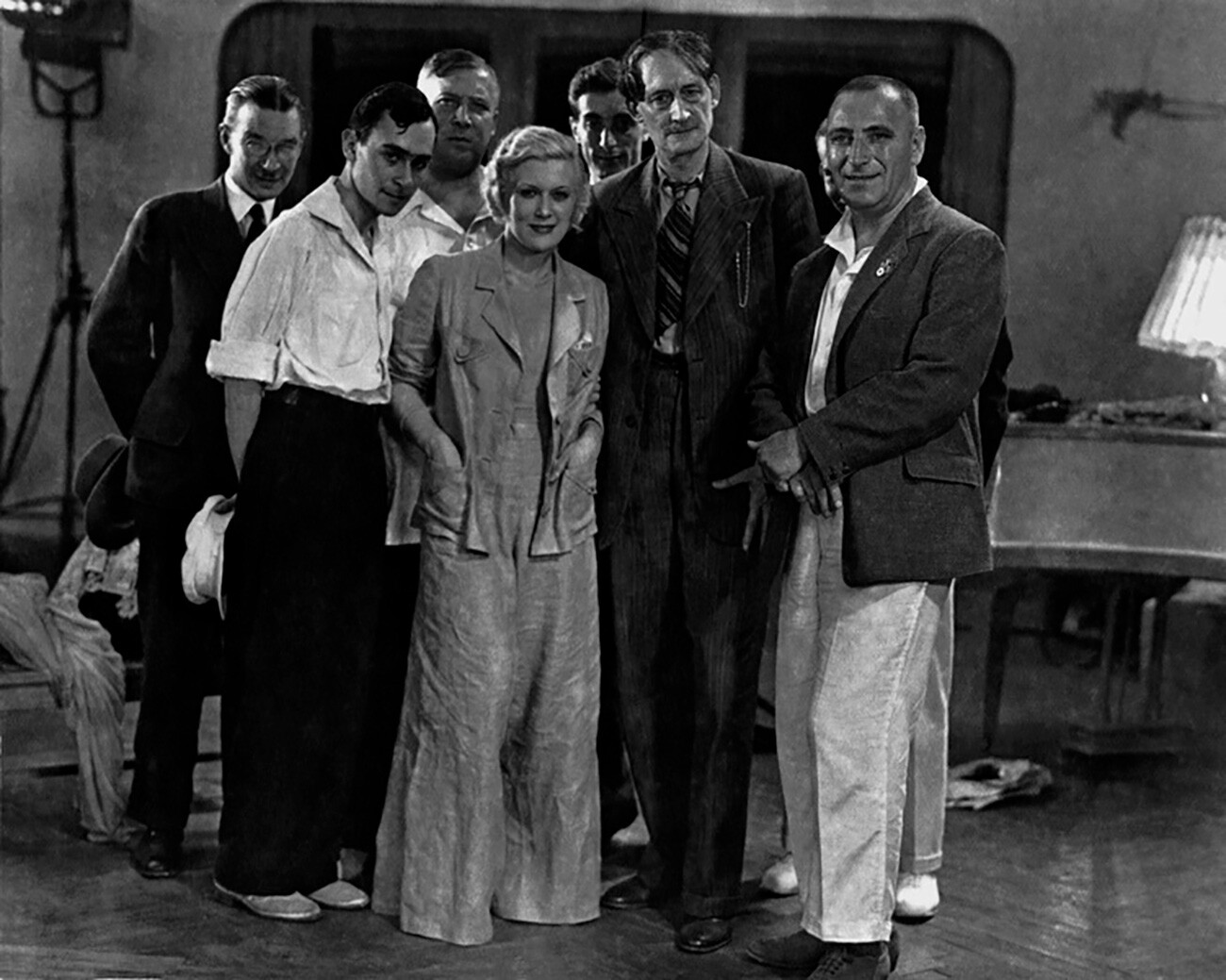
Russian State Archive of Literature and Art/russiainphoto.ru
In the 1930s, the USSR was actively exploring the Arctic. Back in the Summer of 1933, the ‘Chelyuskin’ steamship set out on an expedition along the Northern Sea Route, but it became trapped by ice and drifted with the entire crew for almost five months.
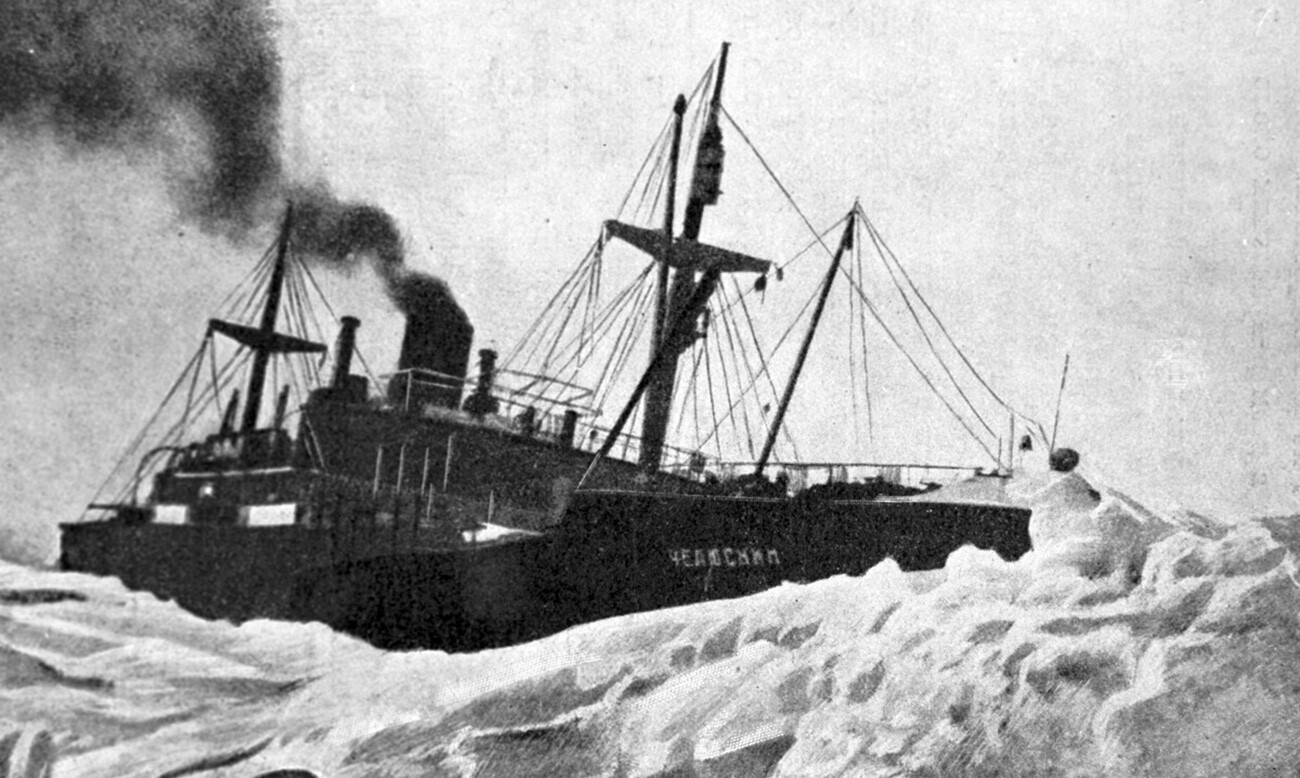
Sputnik
On February 13, 1934, the ship sank, but the passengers managed to evacuate. For two months, they survived on the ice floe while a rescue operation was underway. Pilots made 23 flights, taking more than a hundred ‘Chelyuskin’ crew to the mainland.
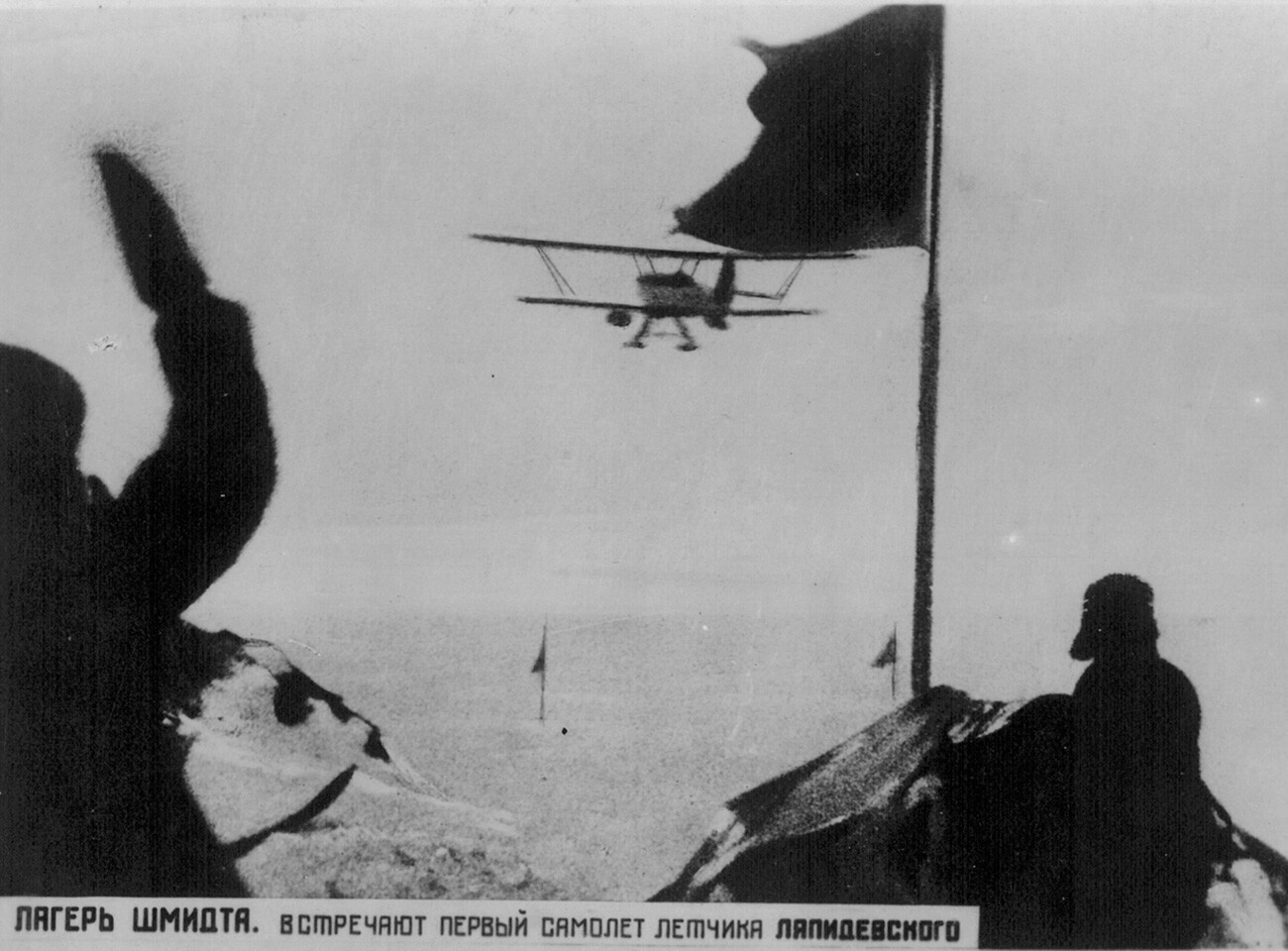
Public domain
In Moscow, the Chelyuskinites were solemnly welcomed with flowers already at the station and a ceremonial reception was also held on the Red Square. The pilots who rescued the crew became the first men in history to receive ‘Hero of the Soviet Union’ awards.

Anatoly Yegorov/MAMM/MDF/russiainphoto.ru
Many Soviet children dreamed of becoming pilots and aviation modeling clubs began to open everywhere.
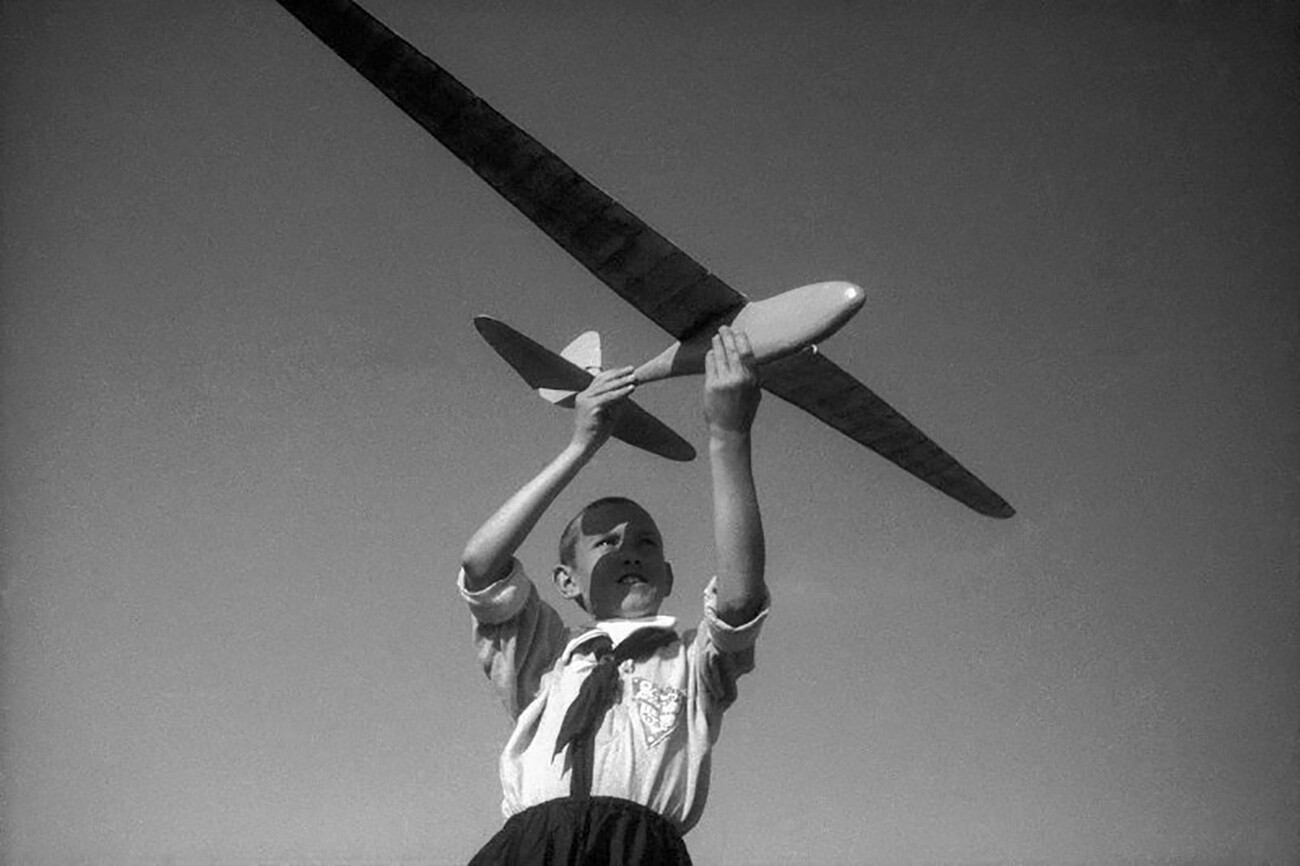
Mikhail Prekhner/MAMM/MDF/russiainphoto.ru
By the way, in 1934, the USSR had not yet completely turned into a puritanical country – and a naked body was commonplace (especially if it was fit and healthy). So, a young lady taking a sunbath in a transparent swimsuit was the norm.
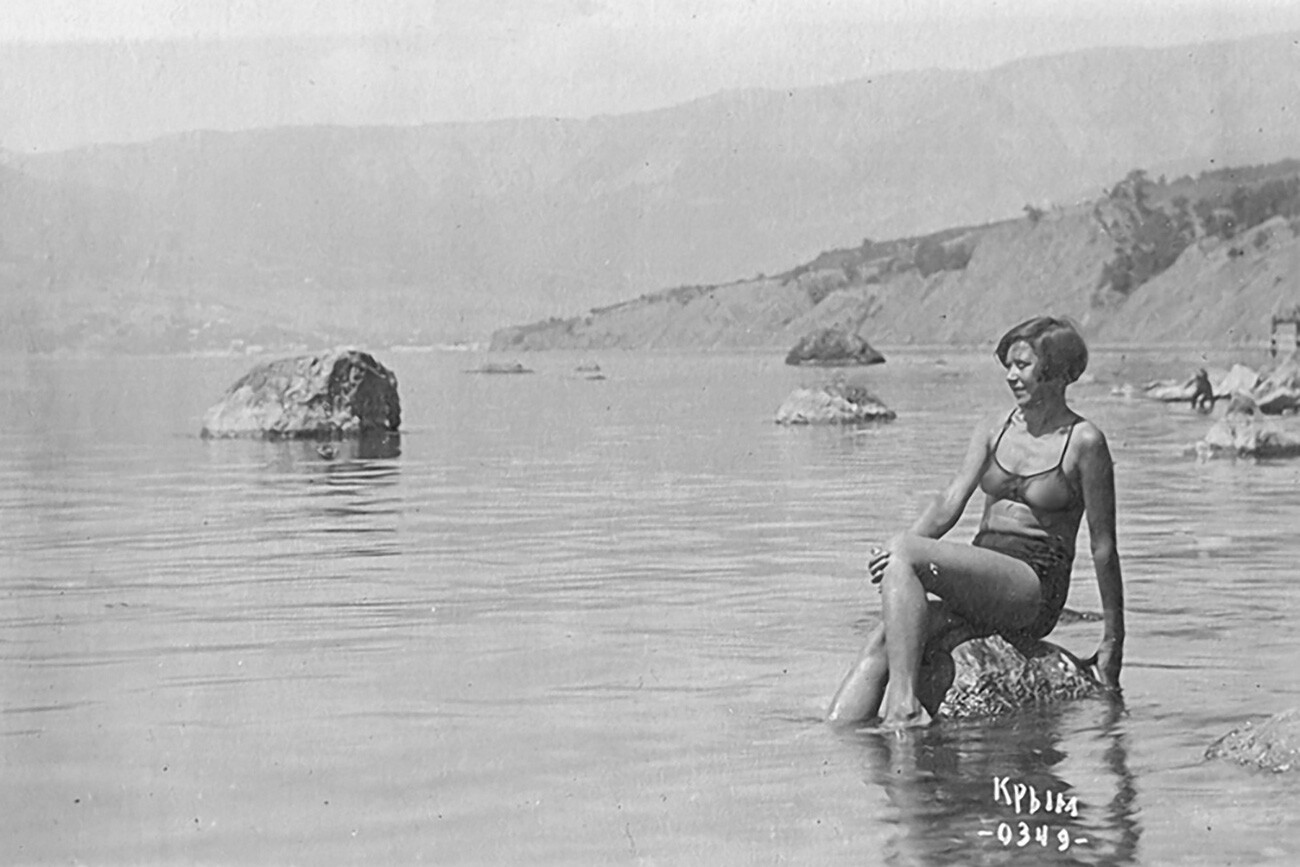
Leonoro Karel archive/russiainphoto.ru
Actually, women in the USSR were becoming more equal members of society and taking up many jobs that had previously been considered “masculine”. Many female journalists and photographers emerged, covering both construction sites and sporting events. Famous photographer Alexander Rodchenko called the shot below: ‘Three women reporters: Krasnyavskaya, Elizaveta Ignatovich and Evgenia Lemberg’
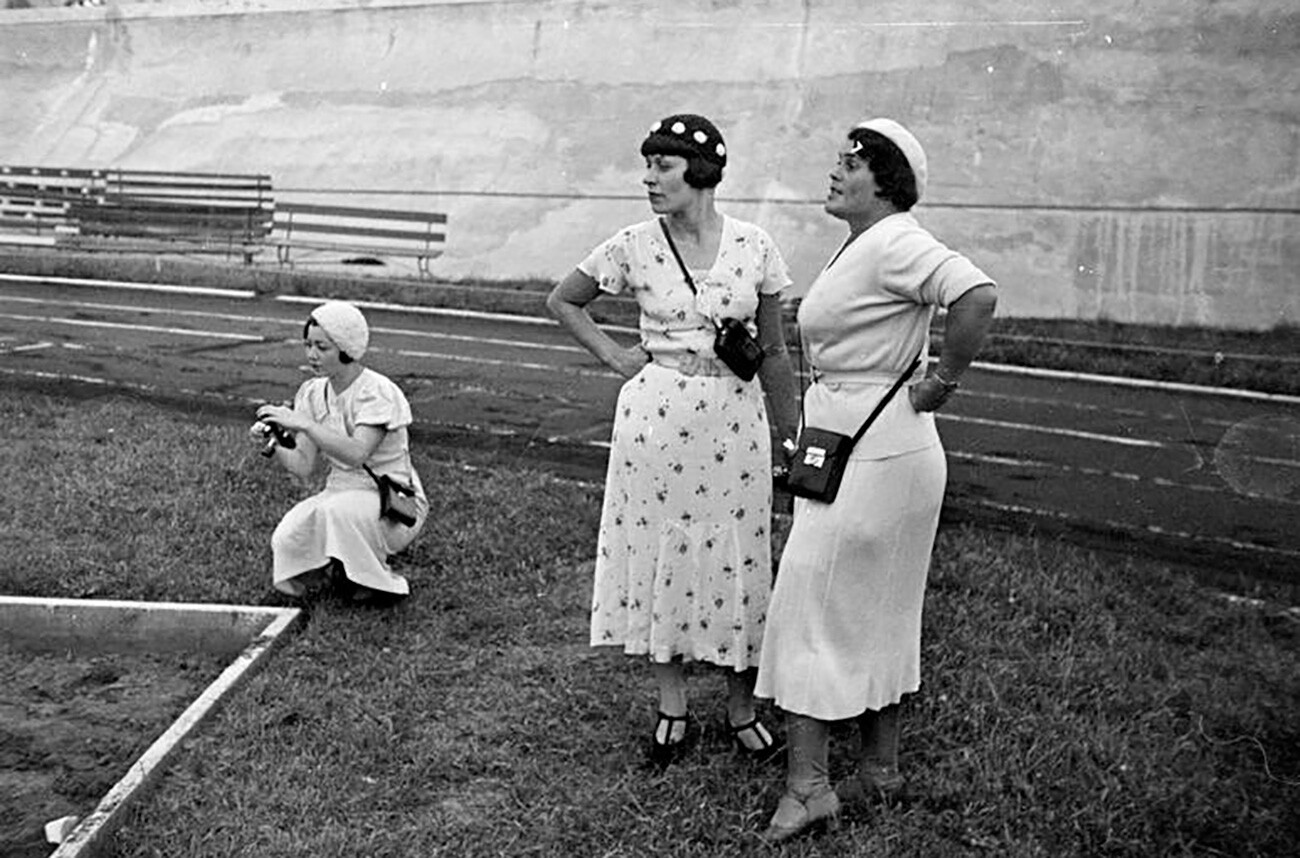
Alexander Rodchenko/MAMM/MDF/russiainphoto.ru
Physical health of Soviet people was also paid special attention to. After all, a builder of communism had to be strong and enduring. The photo below shows physical training at a Red Army summer camp.
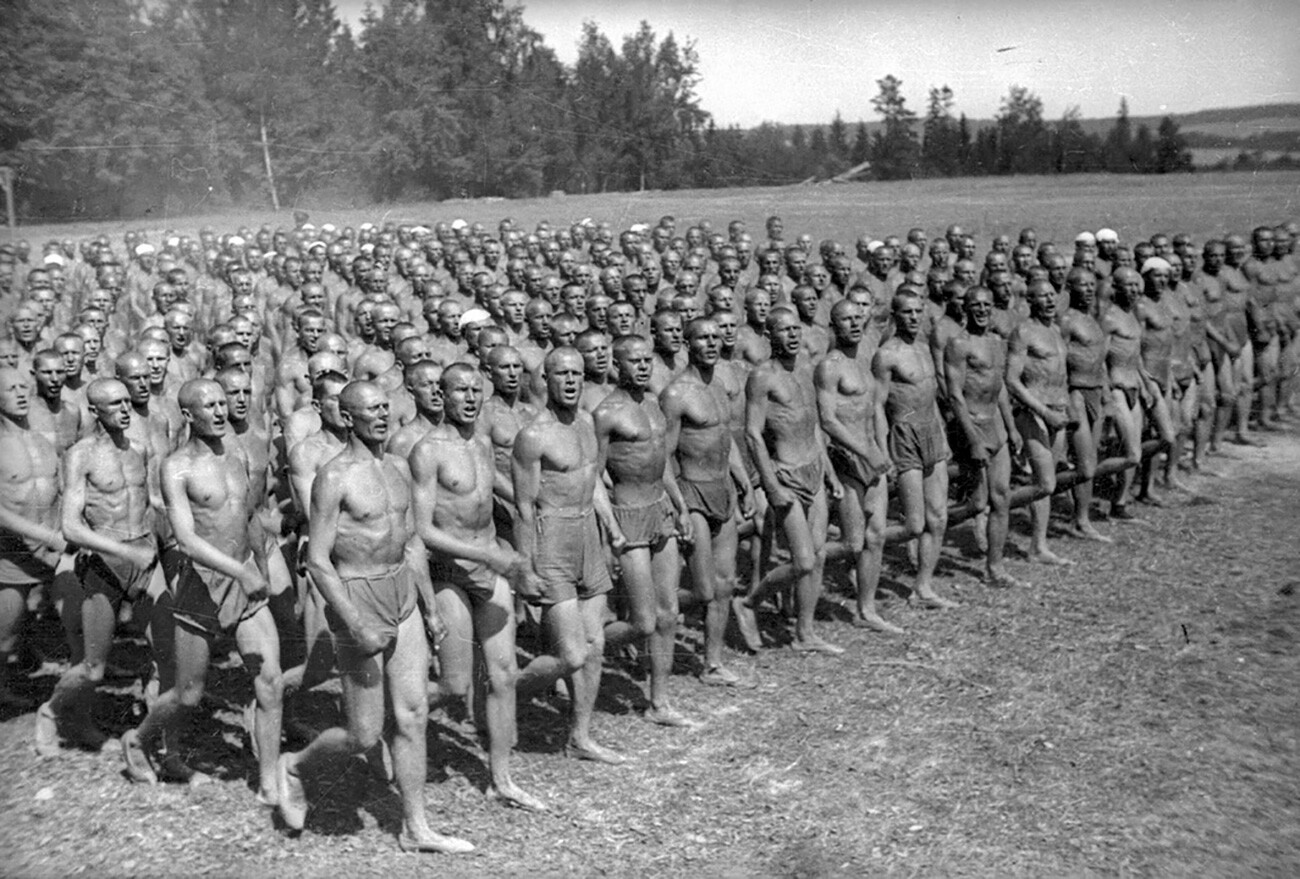
Alexander Ustinov/Ninel Ustinova archive/russiainphoto.ru
Alexander Rodchenko’s famous photo titled ‘Jump into the water’ was taken in 1934 at the Dynamo stadium in Moscow.
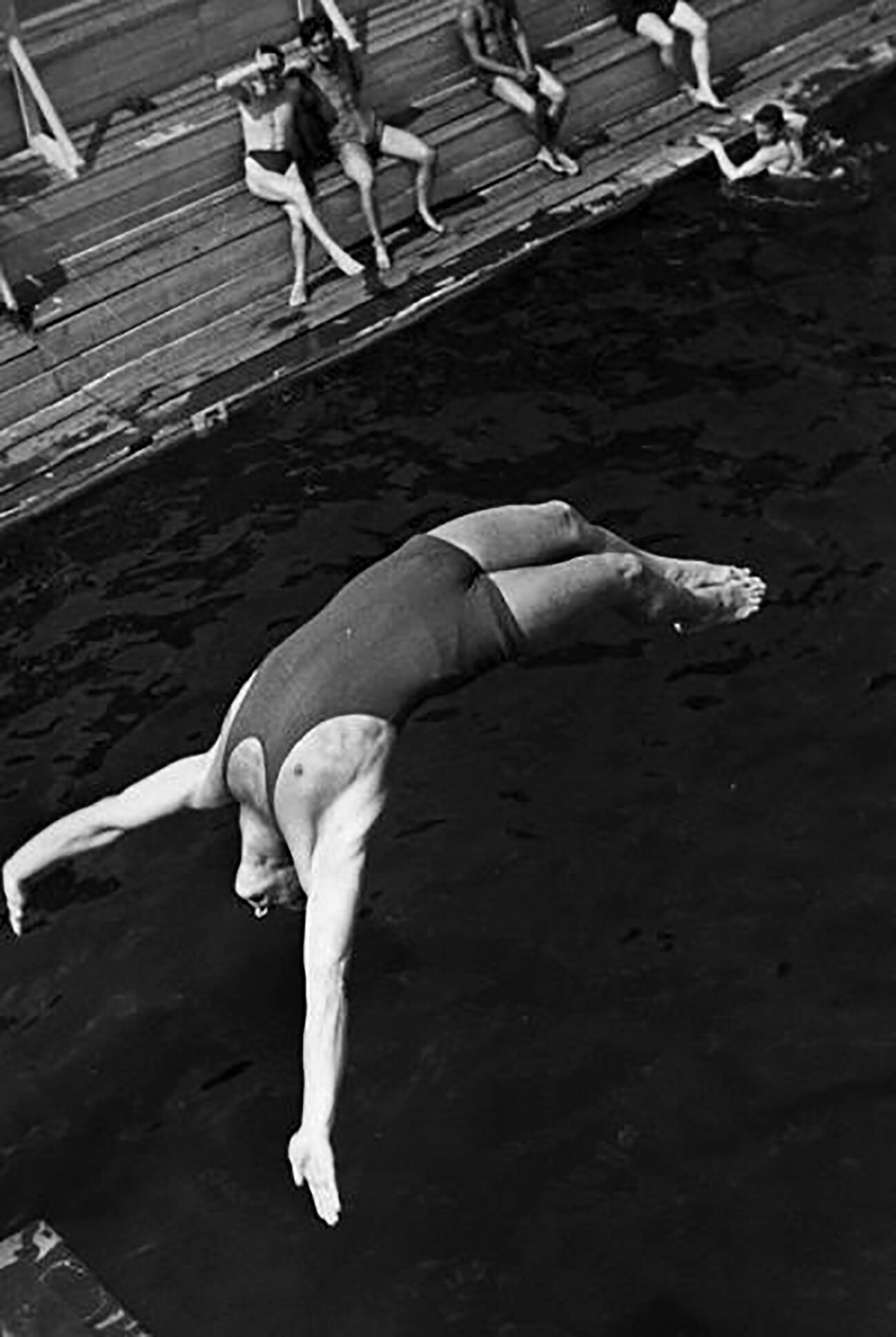
Alexander Rodchenko/MAMM/MDF/russiainphoto.ru
Children in the Soviet Union were engaged in physical training from an early age. In summer, they did exercises, swimming and active games, while, in winter, they were skiing and ice skating.

South Urals State Historical Museum/russiainphoto.ru
Let’s take a look at a few more pictures from ordinary Soviet life. Below are some students at a lecture at the Moscow State University.
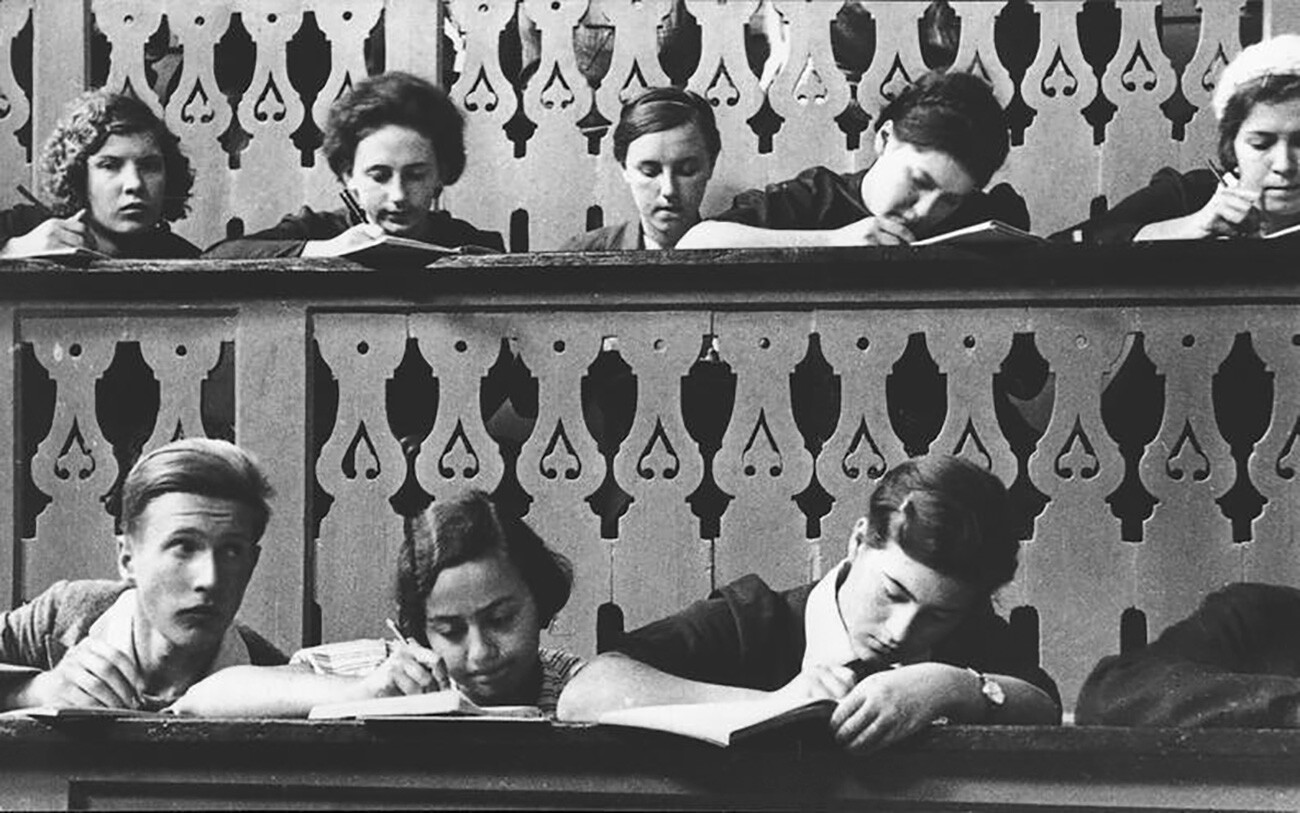
Ivan Shagin/MAMM/MDF/russiainphoto.ru
And here is the training of service dogs in the Red Army.
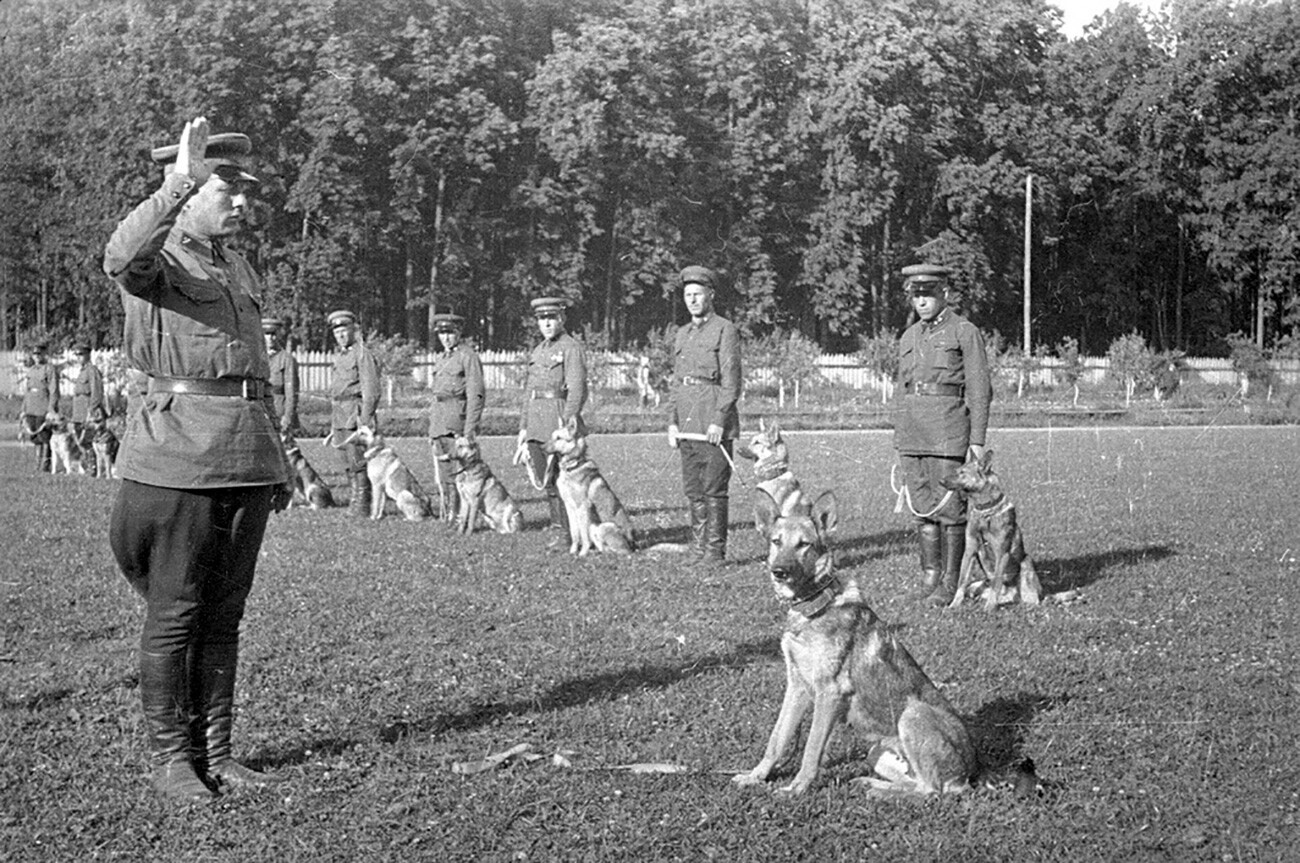
Alexander Ustinov/Ninel Ustinova archive/russiainphoto.ru/russiainphoto.ru
The 1930s were also the years of active collectivization of agriculture. The popular words ‘Kolkhoz’ (collective farm) and ‘kolkhoznik’ (its members) entered the language. The following photo shows collective farmers standing on a hayfield.
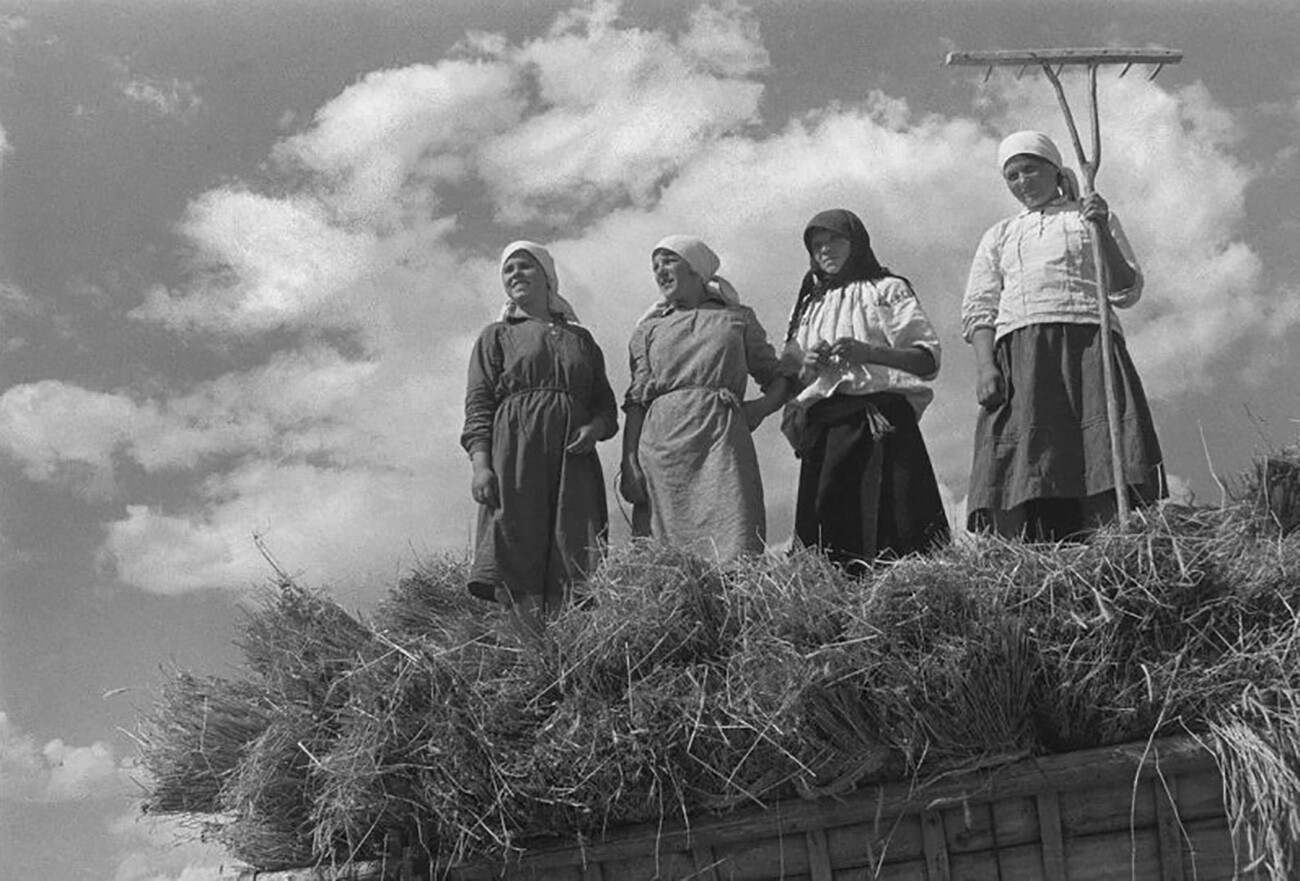
Mikhail Prekhner/MAMM/MDF/russiainphoto.ru
Many Soviet photographers began taking pictures of collective farm life. The photo below shows peasants returning home from work on public land.
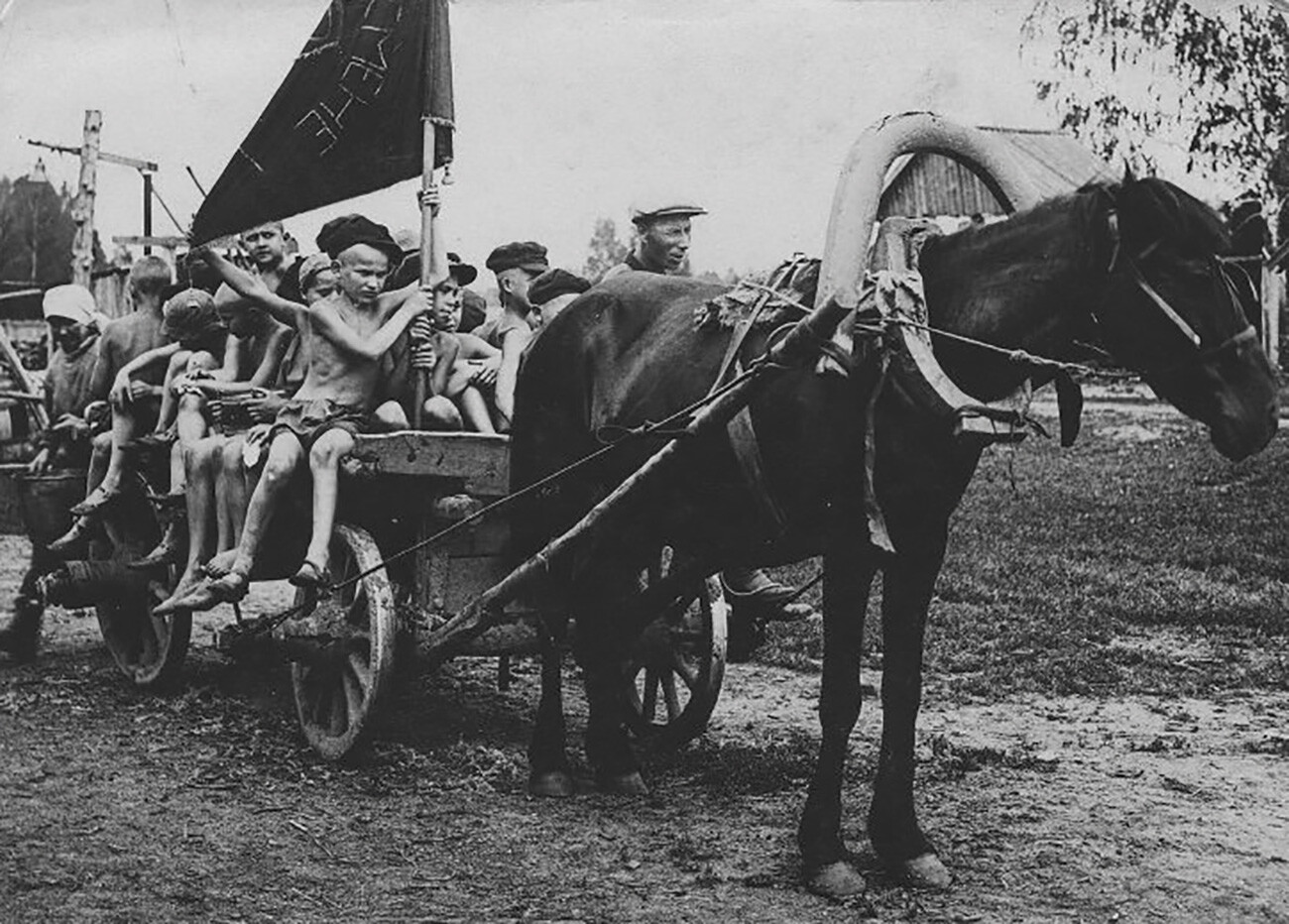
Tea time in a rural house. Surprisingly, despite all the campaigns against religion, icons are still hanging in the hut pictured below.
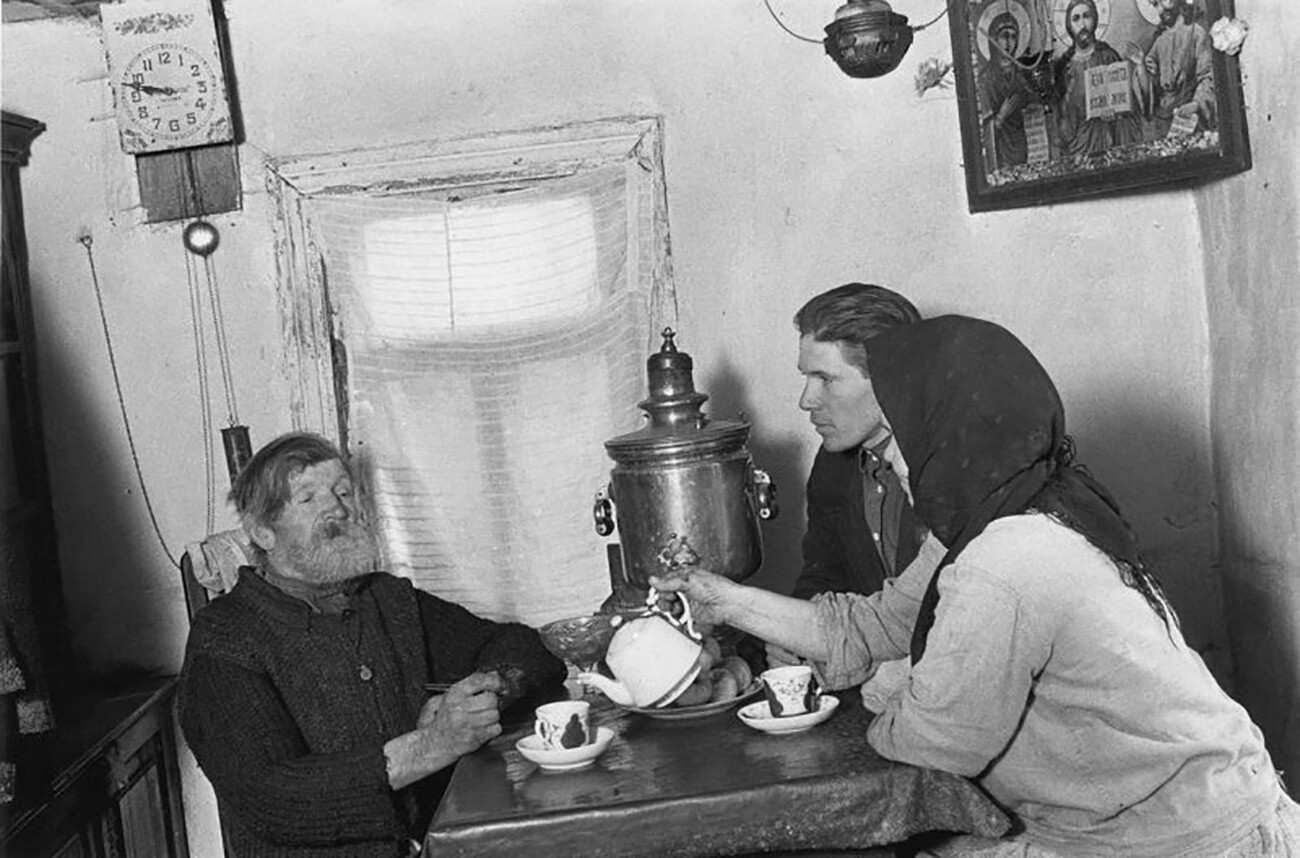
Mikhail Prekhner/MAMM/MDF/russiainphoto.ru
A female harmonist performs in the Caucasus.
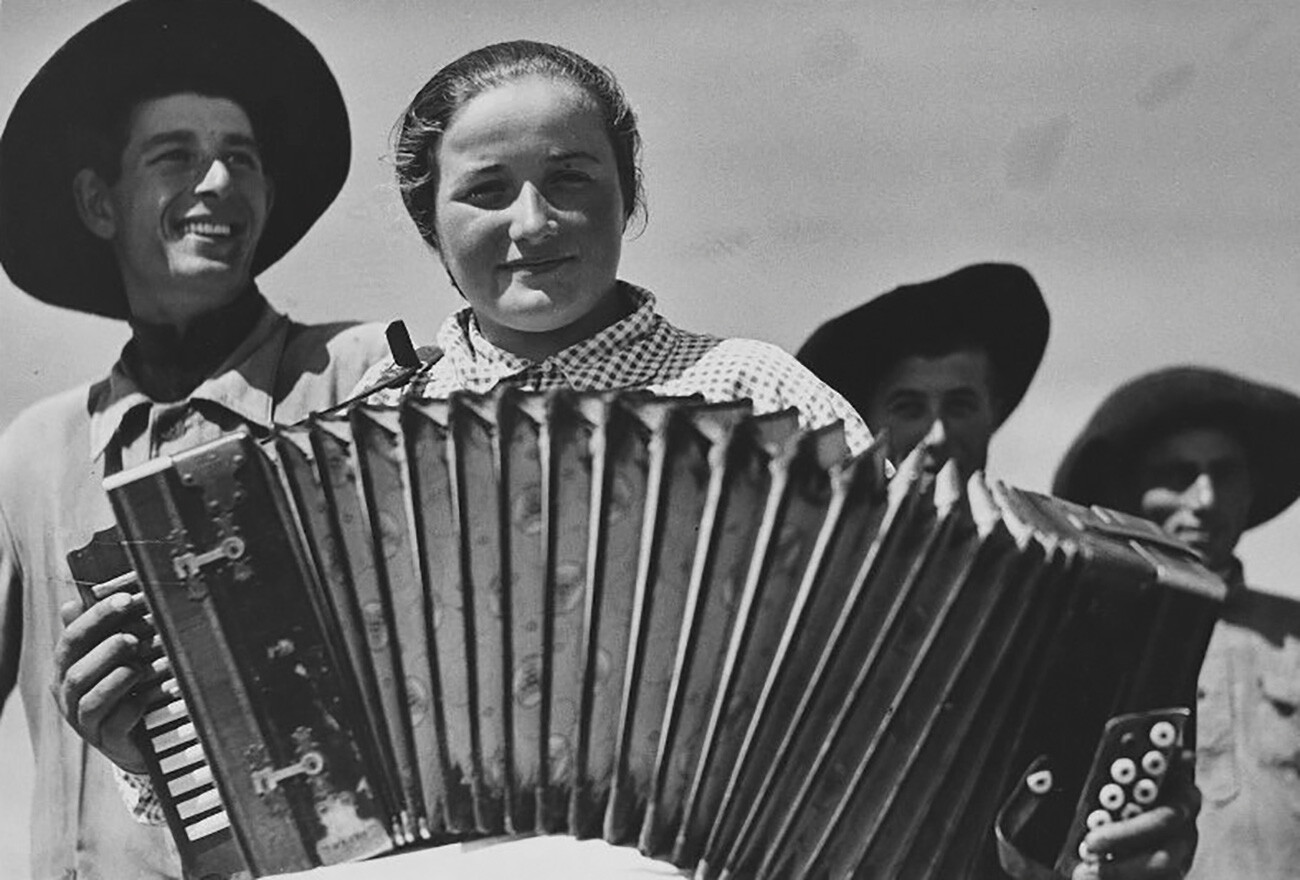
Mark Markov-Grinberg/MAMM/MDF/russiainphoto.ru
Dear readers,
Our website and social media accounts are under threat of being restricted or banned, due to the current circumstances. So, to keep up with our latest content, simply do the following:
- Subscribe to our Telegram channel
- Subscribe to our weekly email newsletter
- Enable push notifications on our website
- Install a VPN service on your computer and/or phone to have access to our website, even if it is blocked in your country
[ad_2]
Announcements
Tickets now live for Dubai’s first homegrown musical spectacle
Published
3 weeks agoon
June 14, 2025
A cultural revolution is about to begin. Tickets are now available for Once Upon A Time in Dubai, the most ambitious, emotional, and spectacular musical ever produced in the region. Opening this December at The Agenda in Dubai Media City, the show is already being called a once-in-a-generation phenomenon — and for good reason.
More than just a stage production, Once Upon A Time in Dubai is the first original large-scale musical entirely created in the UAE, blending Broadway-worthy storytelling with the energy and dreams of one of the world’s most iconic cities. Behind this bold vision is Stéphane Boukris, entrepreneur and cultural trailblazer, who has brought together an international creative dream team — including Universal Music Group MENA as co-producer — to craft a deeply emotional journey of love, ambition, and transformation, set in today’s Dubai.
“This show is a tribute to everything Dubai represents: ambition, diversity, and the power to build your own destiny,” says Boukris. “We are creating something people will never forget.”
A World-Class Team Behind the Curtain
The production brings together talents who have previously worked on global shows such as Céline Dion, Disney shows, and Arabs Got Talent (MBC). From lighting to choreography and technical design, every detail is crafted by artists and technicians at the highest international standards.
A Story That Speaks to a Generation
At the heart of the show is Will, a young English dancer who arrives in Dubai to search for Sophia, the woman he loves. Along the way, he meets artists, entrepreneurs, and dreamers from all walks of life, culminating in a celebration of courage, community, and reinvention.
The cast features rising stars Amanda Maalouf (X Factor) and Joe Woolford (The Voice UK) — with many of the lead vocalists and performers previously featured on international talent platforms, bringing an exceptional level of stage presence and vocal power. The musical includes over 20 original songs composed by Nazim Khaled, including already-viral hits like “Habibi”, “Stranger in the World”, and “Think Big”.
A City-Wide Movement
With over 150,000 spectators expected across 55 performances, the show is much more than an event — it’s becoming a movement. Once Upon A Time in Dubai is already making waves across the city with:
● Strategic brand partnerships: McDonald’s, Carrefour MAF, Careem, Accor, Mall of the
Emirates, Tilal Al Ghaf, GEMS Education, and more
● Immersive activations: Soundtracks in Hala taxis, QR codes in malls, music in retail
stores, and dedicated social media campaigns
● Youth engagement: Auditions and showcases for students across GEMS schools,
opening the stage to the next generation of performers
The show will be performed in English, and supported by a multicultural creative team led by stage director Johan Nus.
Exclusive Ticket Sale
Tickets are available exclusively via Fever, the global ticketing platform. Pre-sale access has already launched with selected partners such as GEMS, Muse by Chalhoub, and Accor’s ALL loyalty members — with thousands of tickets snapped up in just days.
🎤 Behind the scenes videos, interviews with the cast, and a full media kit are available upon request. 📸 Press passes for opening week are now being issued — be among the first to witness the birth of a new cultural landmark.
Announcements
Dubai Musical Debuts with Amanda Maalouf’s Anthem
Published
2 months agoon
April 23, 2025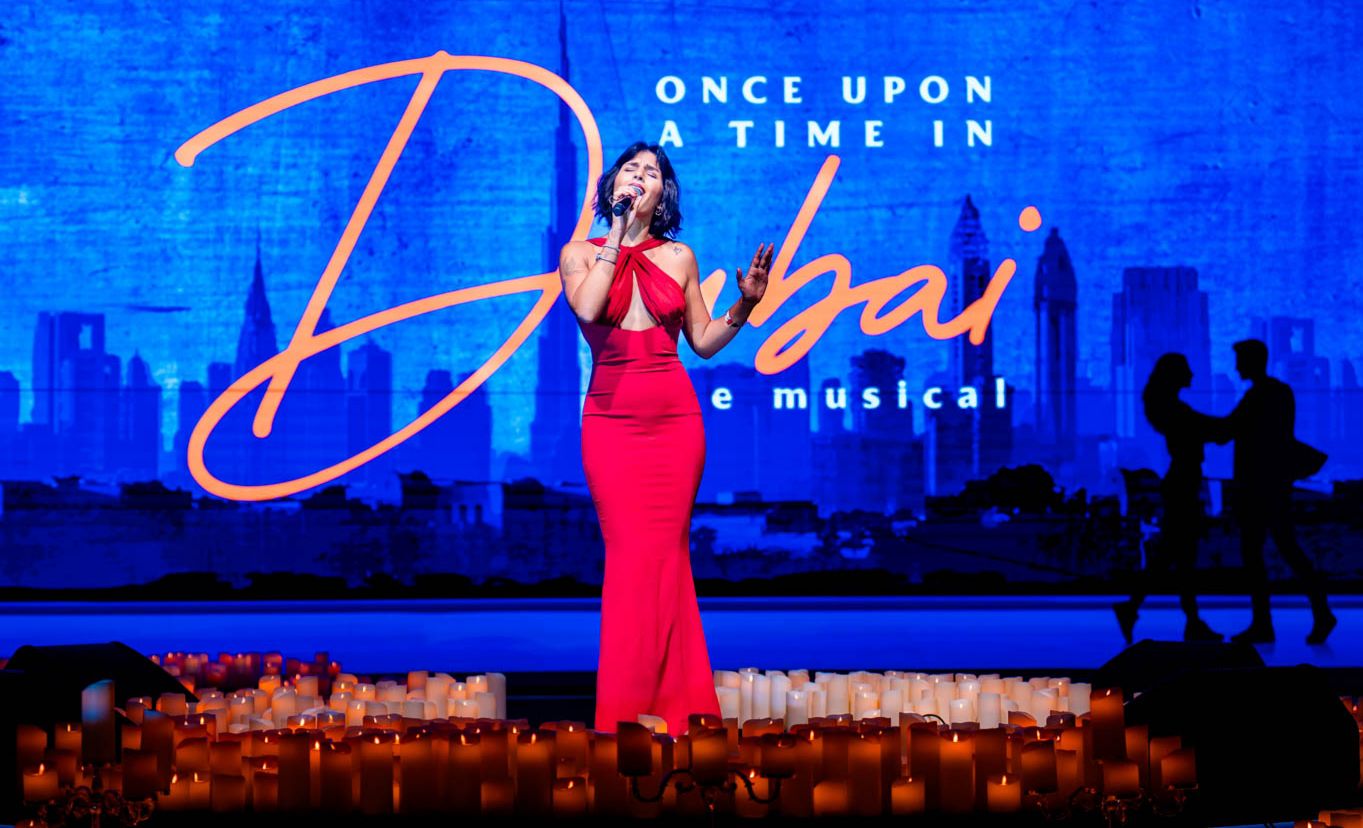
In a performance that blended emotion, elegance, and East-West harmony, Lebanese-French singer Amanda Maalouf on Wednesday gave a select UAE audience a stirring preview of the upcoming musical Once Upon A Time in Dubai, set to premiere in December 2025.
The exclusive showcase featured Maalouf performing “Habibi,” one of the show’s signature numbers, at an invite-only preview attended by media, partners, and cultural stakeholders. The song—a poignant blend of Arabic influences and Western theatrical arrangement—earned enthusiastic applause, offering a glimpse of what producers are calling “a new kind of musical for a new Dubai.”
“Dubai is more than a setting—it’s a character in this story,” said Stéphane Boukris, co-producer of the musical. “This project is about cultural unity, artistic innovation, and shining a spotlight on a new generation redefining identity in the Middle East. We’re proud to bring this bridge between France and the UAE to life.”
For Maalouf, whose performance marked the first public taste of the show, the moment was deeply personal. “Habibi is a song that speaks from the heart—it’s a journey through love, self-expression, and identity,” she told reporters after the performance. “Performing it here in Dubai, where East and West meet so beautifully, is a dream. This is just the beginning [of great things together].”
The team behind Once Upon A Time in Dubai says the musical is more than entertainment—it’s a cultural project designed to showcase Dubai as a city of stories, voices, and future-forward artistry.
The production is backed by Universal Music and features a cast and crew with international credentials, with more previews and announcements expected soon.
A collaboration between a visionary French team and Universal Music, the musical tells the story of a young generation rising in the heart of Dubai, navigating identity, ambition, and tradition in a rapidly changing world. With original compositions by renowned composer Nazim Khaled and set against the backdrop of the UAE’s global crossroads, the show promises to be a landmark moment for original musical theatre in the region. The story, told through original music and dance, will premiere later this year, with full production details expected to be announced over the coming months.
Entertainment
Philippine film legend Nora Aunor passes away at 71
Published
3 months agoon
April 17, 2025
Veteran actress, politician and beloved superstar Nora Aunor has passed away at the age of 71.
Her son, Ian De Leon, confirmed the sad news in a Facebook post on Tuesday, 16 April 2025. Sharing a photo of his late mother, he wrote:
“With deep sorrow and heavy hearts, we share the passing of our beloved mother, Nora C. Villamayor ‘Nora Aunor’ who left us today at the age of 71. She was the heart of our family, a source of unconditional love, strength, and warmth. Her kindness, wisdom, and beautiful spirit touched everyone who knew her. She will be missed beyond words and remembered forever.”
The late star’s wake will be held at The Chapels, Heritage Park in Taguig, according to her daughter and fellow actress Lotlot de Leon.
A National Treasure
In 2022, Nora Aunor was officially recognised as a National Artist for Film and Broadcast Arts by the Philippine government, the highest honour given to individuals who have made a lasting impact on the country’s arts and culture. She was honoured alongside screenwriter Ricky Lee and the late director Marilou Diaz-Abaya.
Cause of Death
Neither the 71-year-old’s family nor authorities have confirmed a cause of death yet. However, according to the media outlet Inquirer.com, she was at a Pasig hospital for an undisclosed procedure.
Career Highlights
Nora Aunor rose to fame as a singer and actress, later becoming one of the most respected names in Philippine cinema. She is best known for her award-winning performance in the critically acclaimed film Himala.
Her most recent film appearance was in Mananambal, alongside actress Bianca Umali. On television, her final role was in the GMA Afternoon Prime series Lilet Matias: Attorney-at-Law.
A true icon, Nora Aunor leaves behind a rich legacy and a nation in mourning.
Tributes Pour In
“Every tear she shed onscreen felt like a collective heartbreak. Every line she delivered became etched in the memory of Philippine cinema… Nora, salamat sa sining. Salamat sa puso,” wrote Charo Santos-Concio said in her post.
“Despite her legendary status, she carried herself with such modesty — confident in her craft, yet never boastful,” Actress Lovi Poe said in her post.
“The FDCP mourns the passing of National Artist Nora Aunor — an icon, a legend, and a voice that captured the soul of a nation. Her performances were never just roles; they were reflections of truth, hope, and resilience,’ wrote The national film council of the Philippines.
“We extend our deepest condolences to the family, friends, fans, and every Filipino soul mourning the loss of our beloved Superstar and National Artist,” said noted social activist Persida Rueda-Acosta.

Thinking of buying your first home in Dubai? A new government programme is here to help

India’s top steelmaker opens office in Dubai to boost UAE ties and tap regional market

Lost in Dubai, found in Pakistan: YouTuber reclaims AirPods after one-year hunt
Popular
-

 Entertainment4 months ago
Entertainment4 months agoSalman Khan’s ‘nepotism’ joke steals the show at nephew Ayaan’s song launch in Dubai
-

 Entertainment4 months ago
Entertainment4 months agoBollywood power couple Govinda’s marriage on the rocks after 40 years
-

 Entertainment4 months ago
Entertainment4 months agoOSCAR SHOCKS AND SURPRISES: WHO IS LIKELY TO WIN BIG ON HOLLYWOOD’S BIGGEST NIGHT











